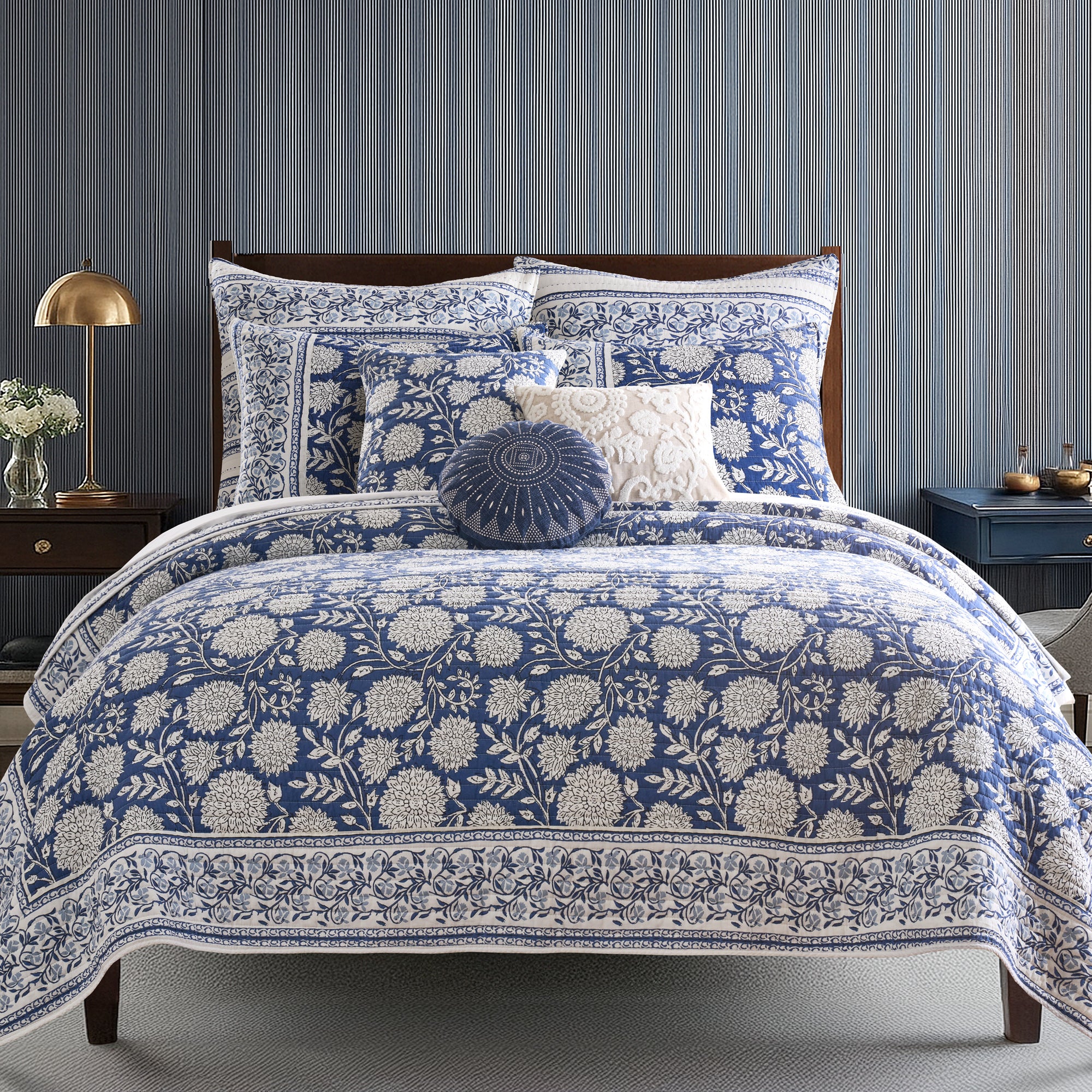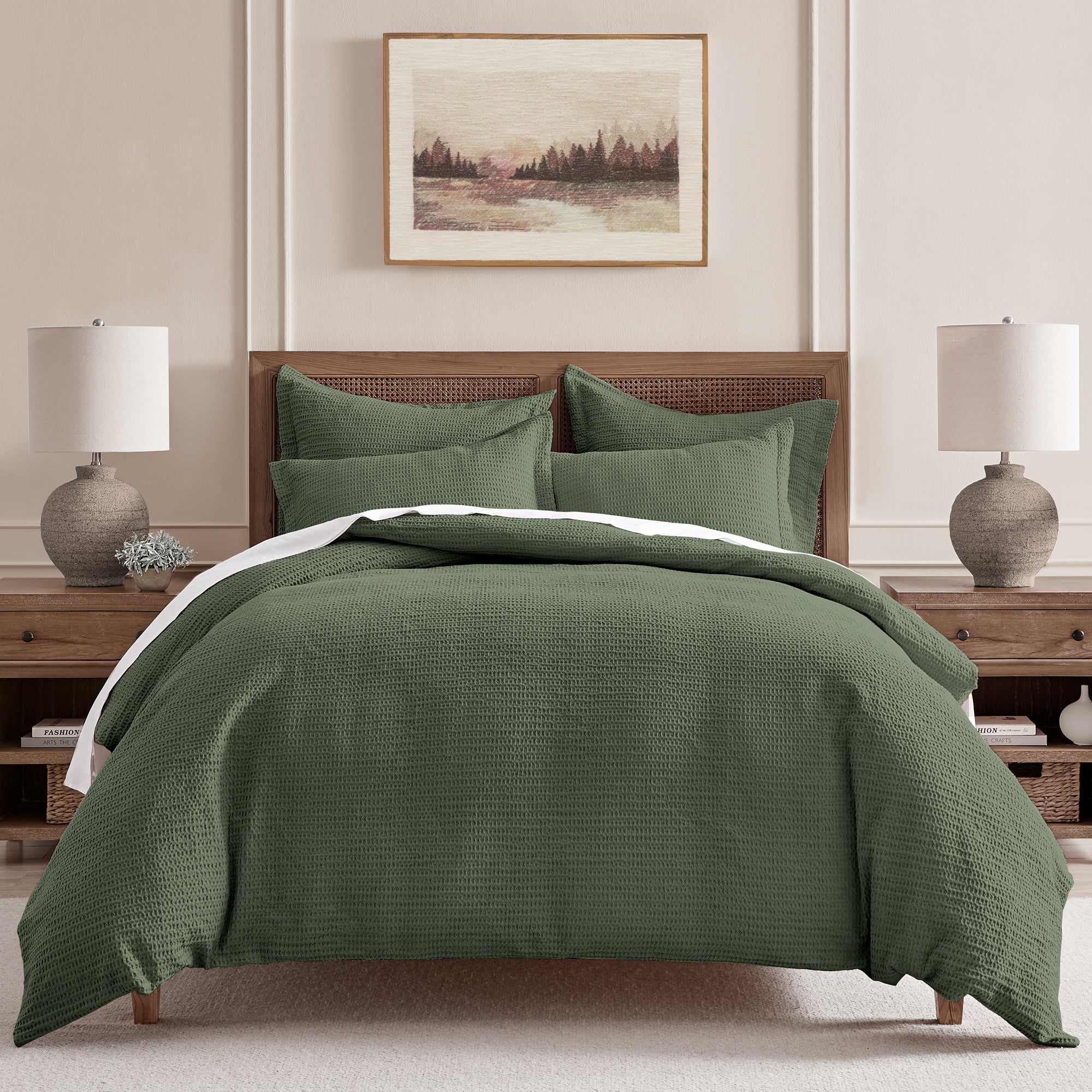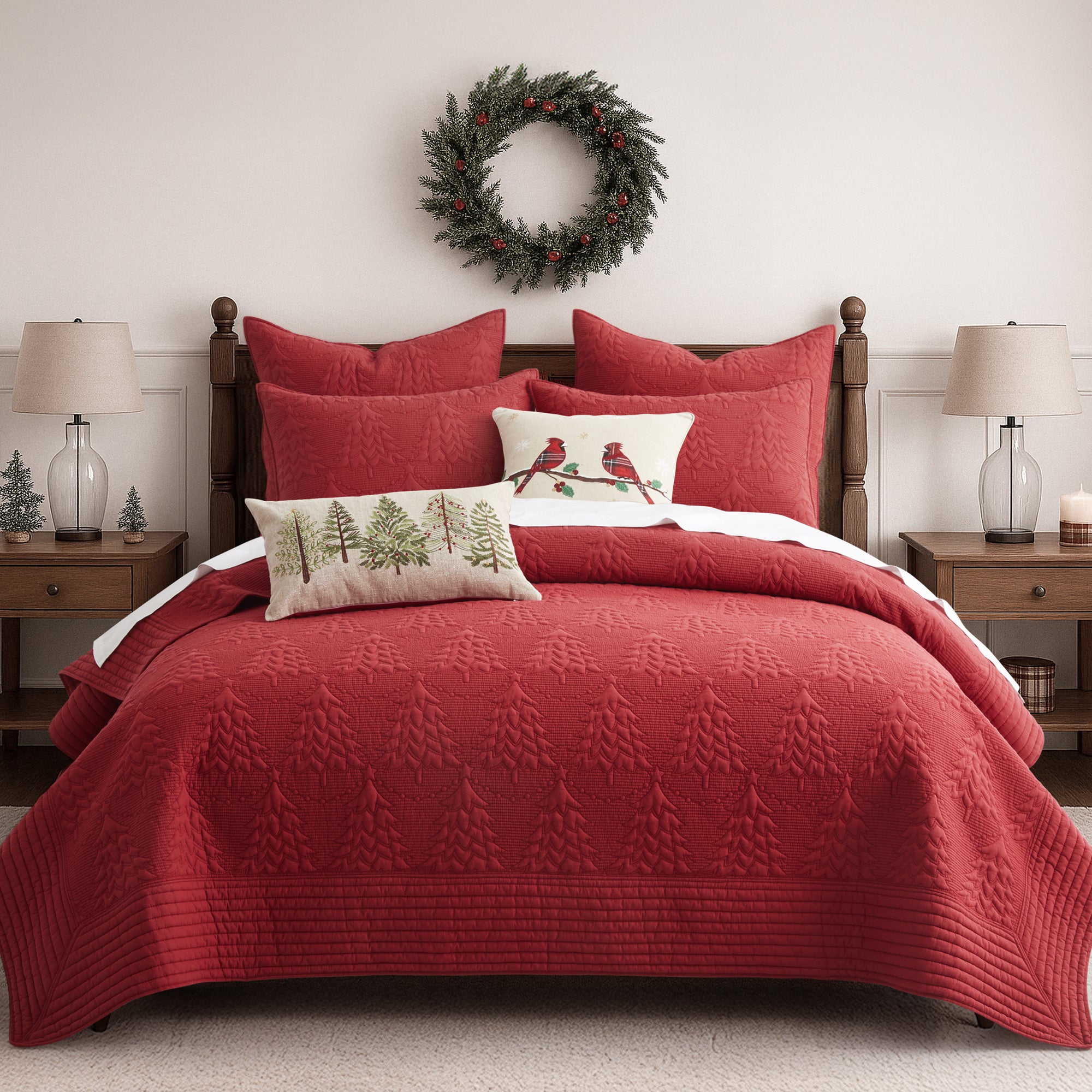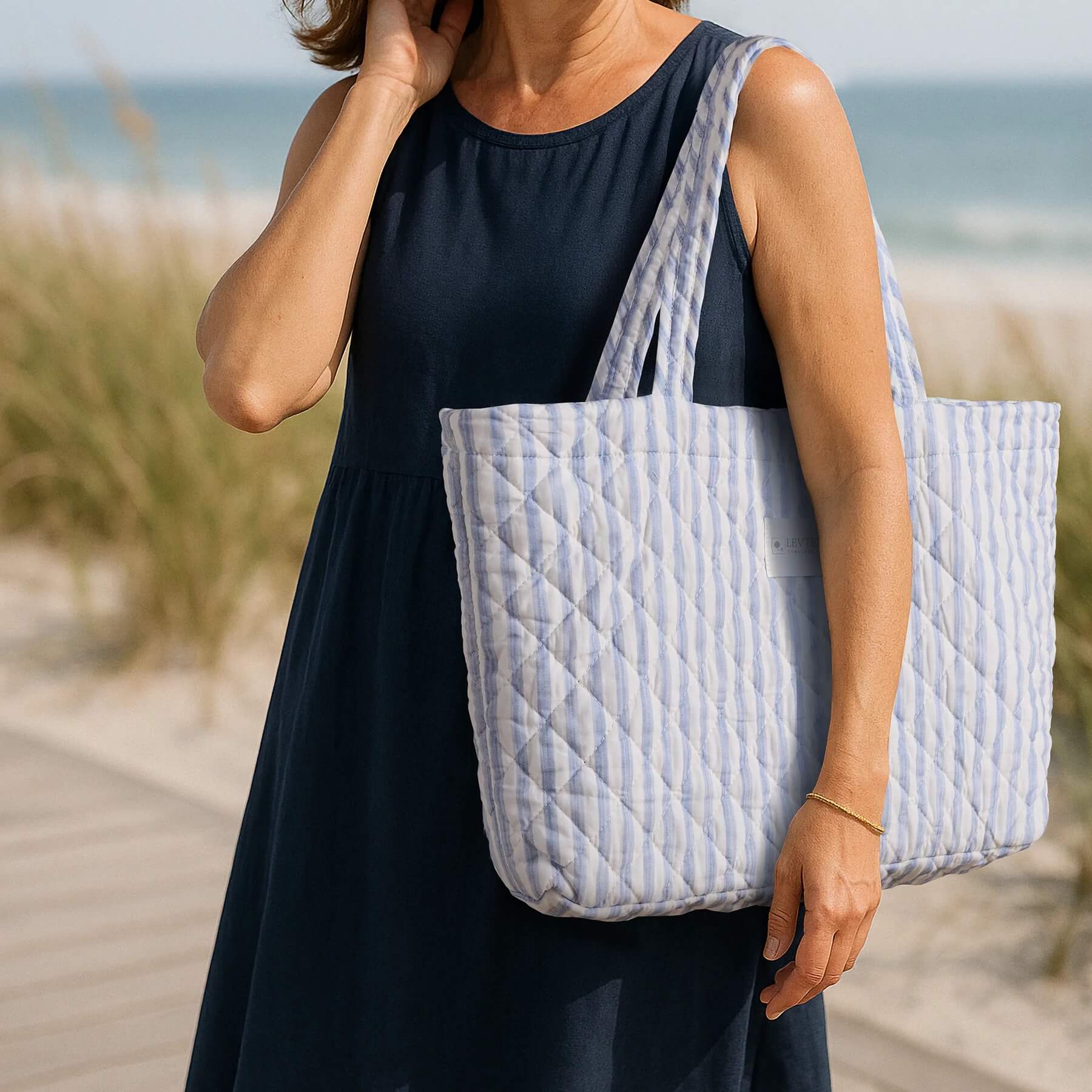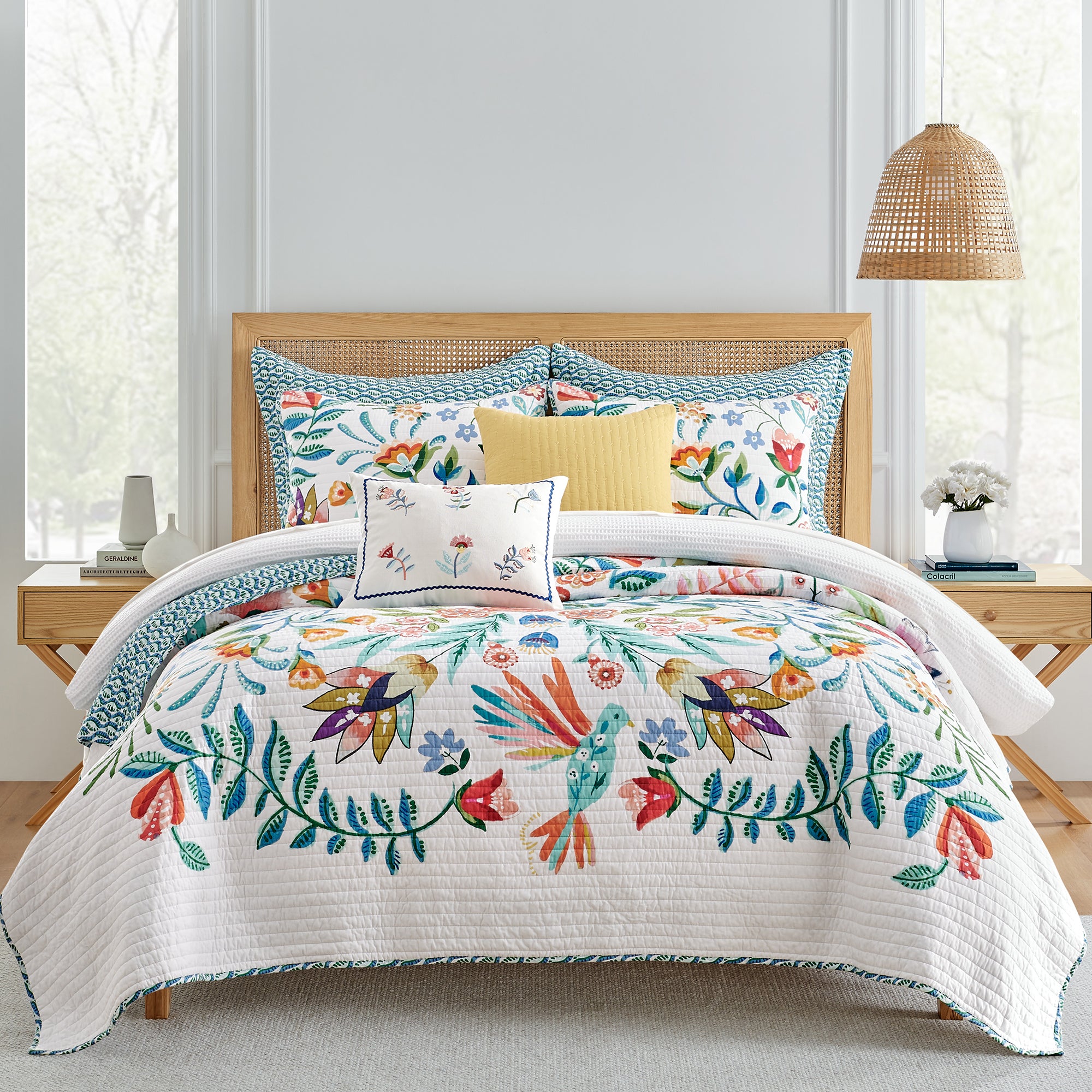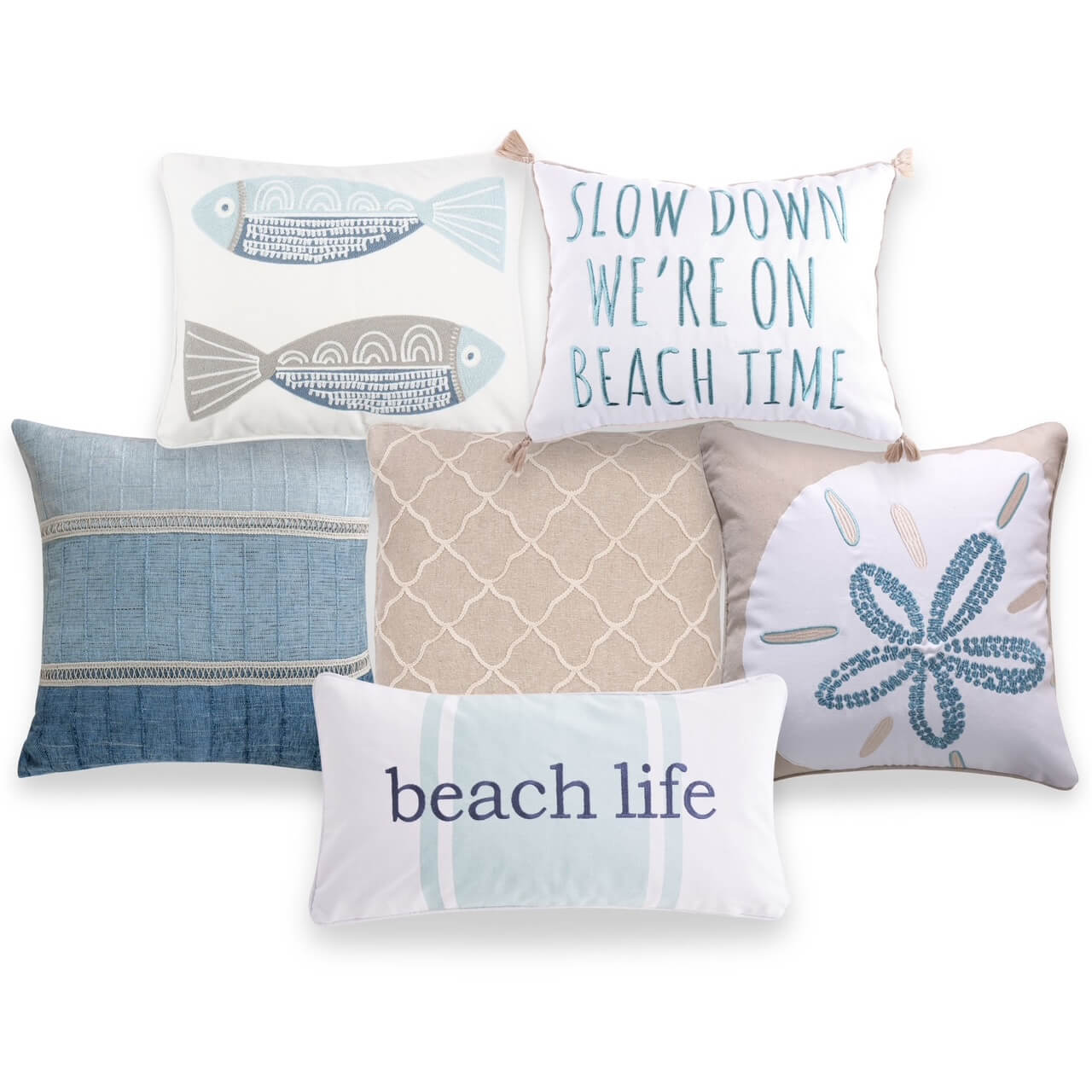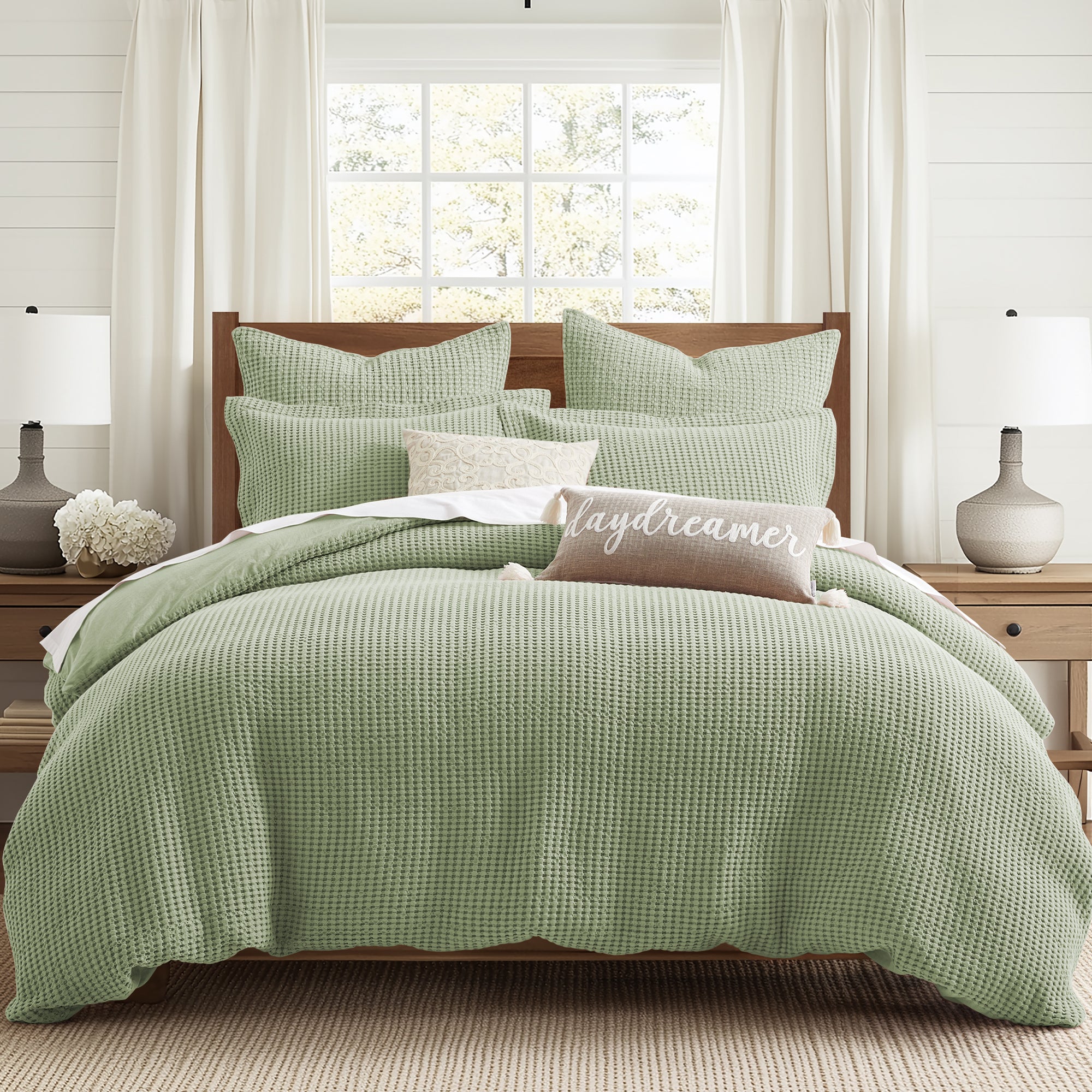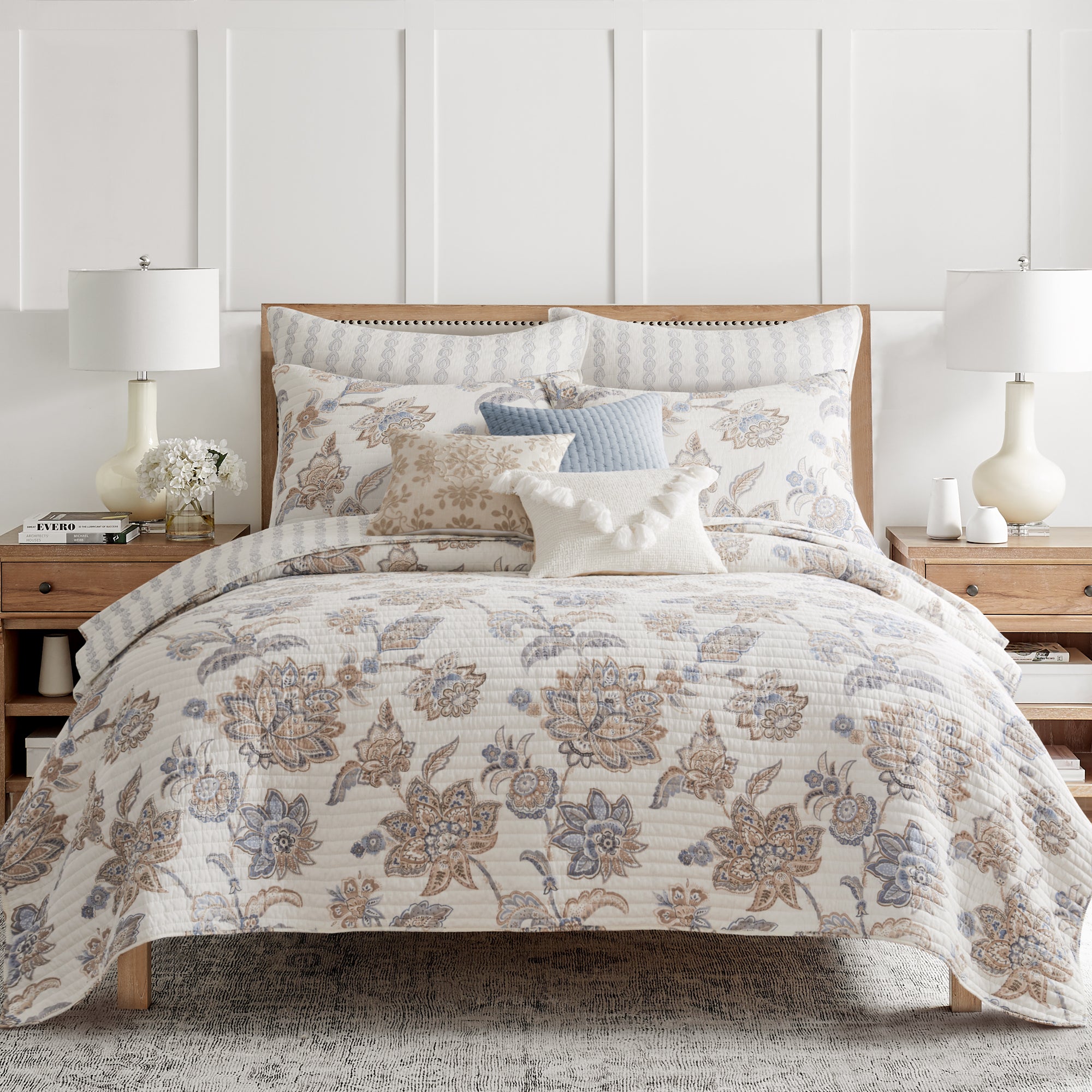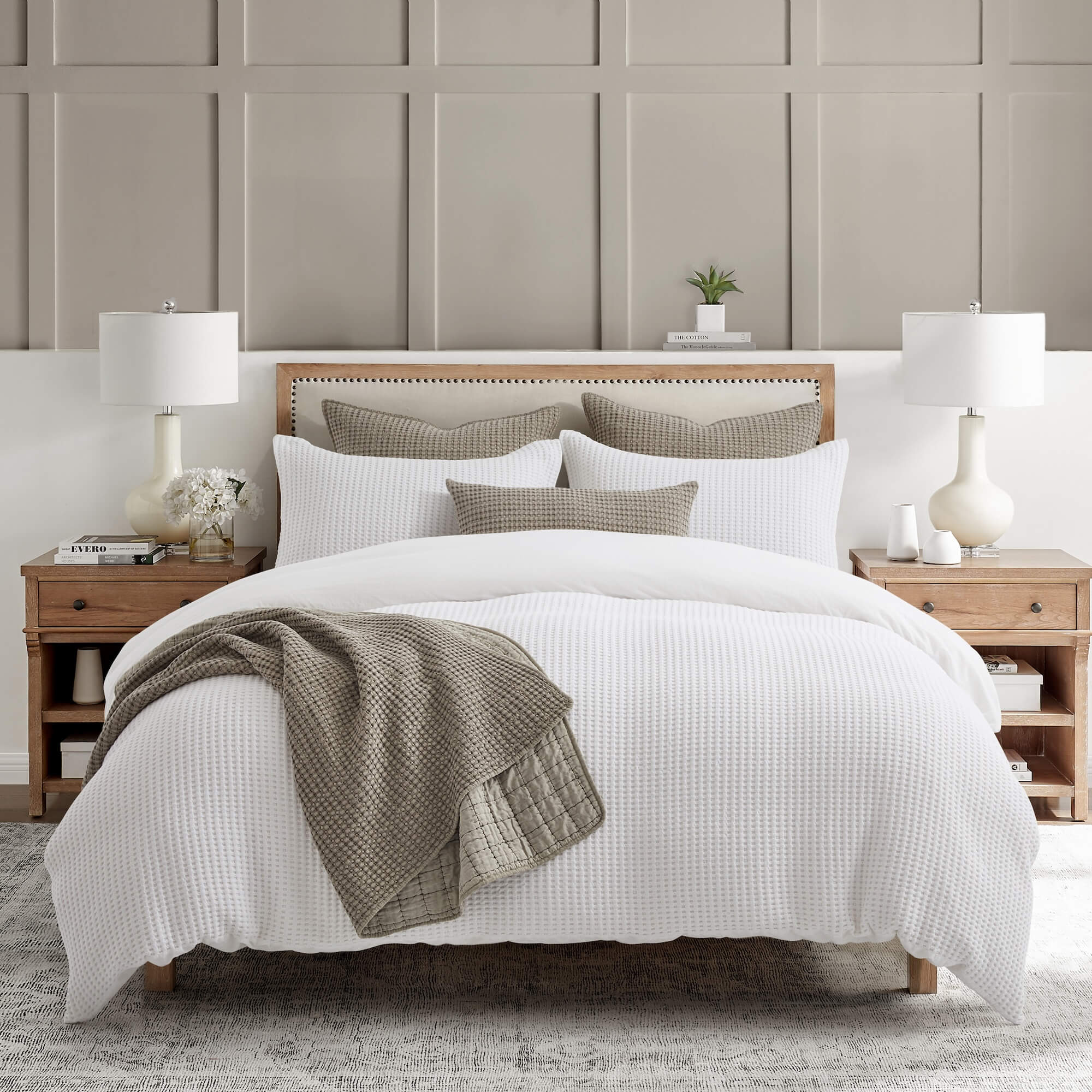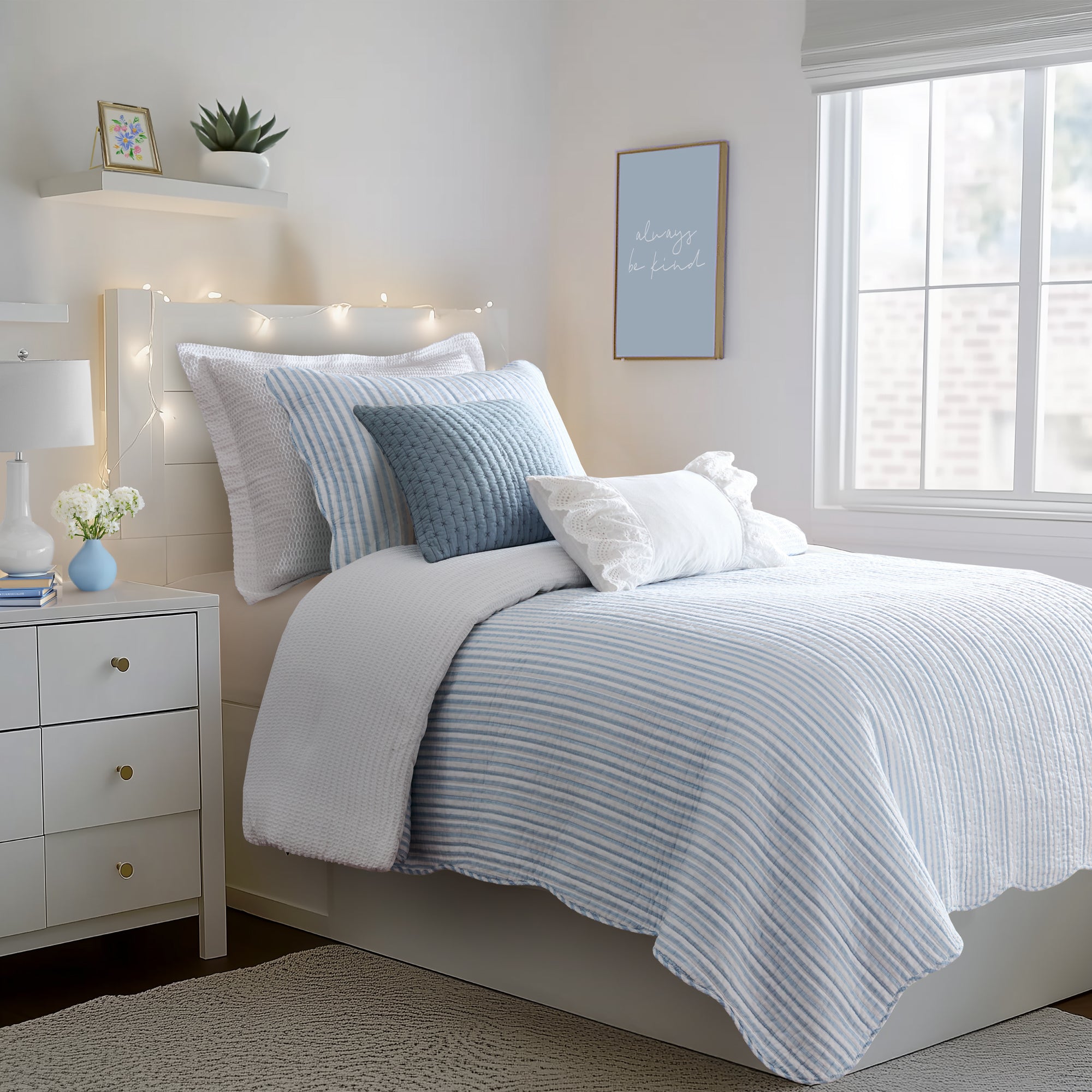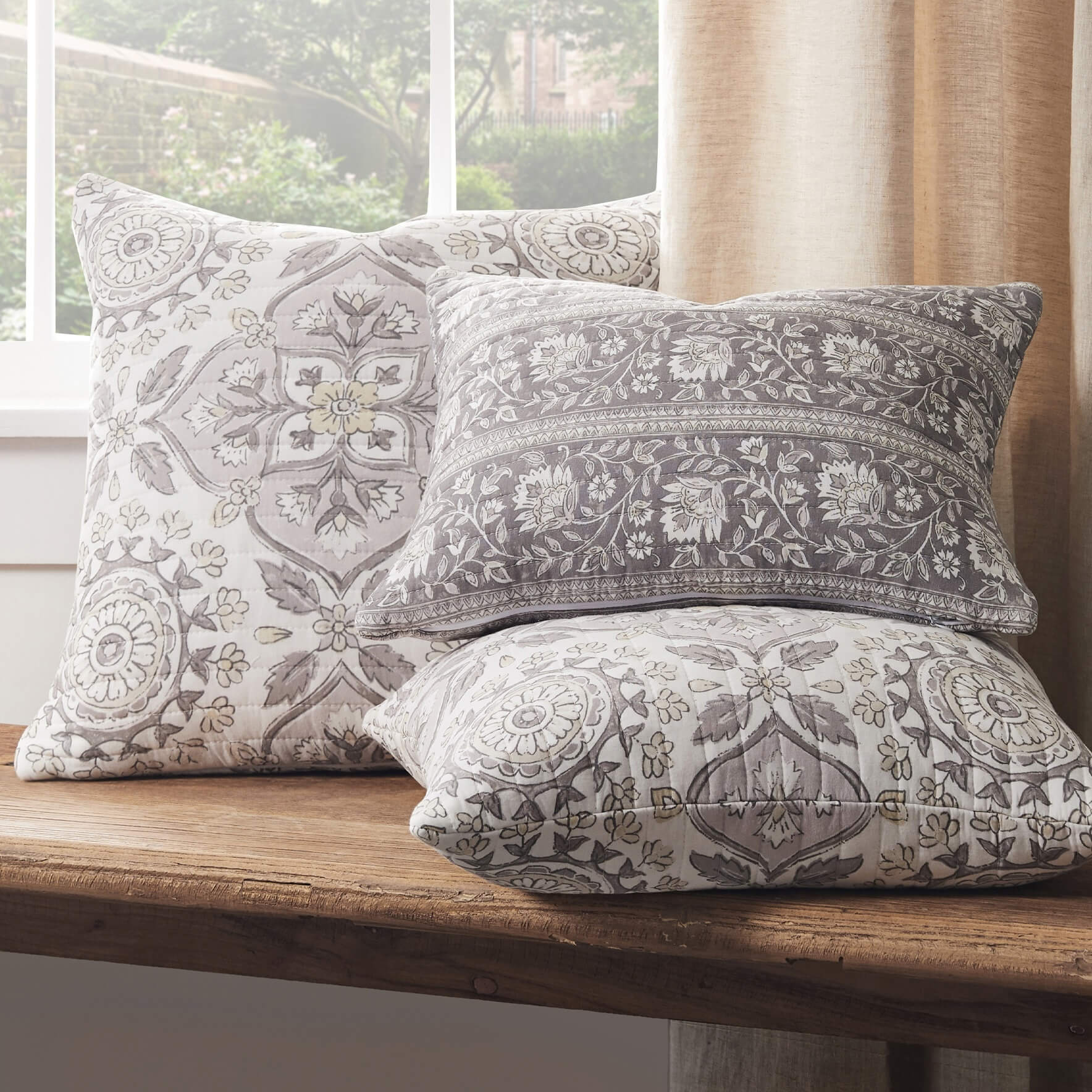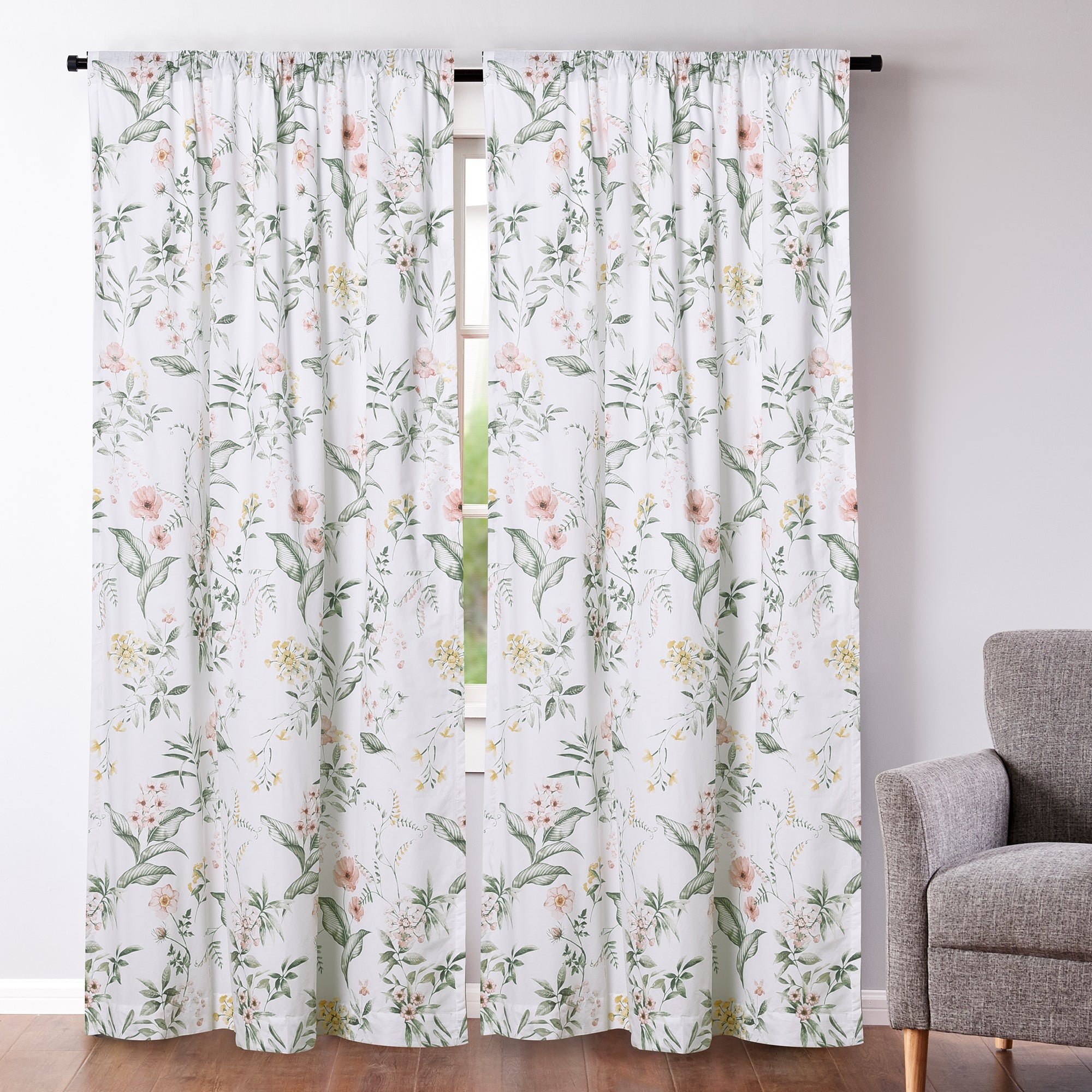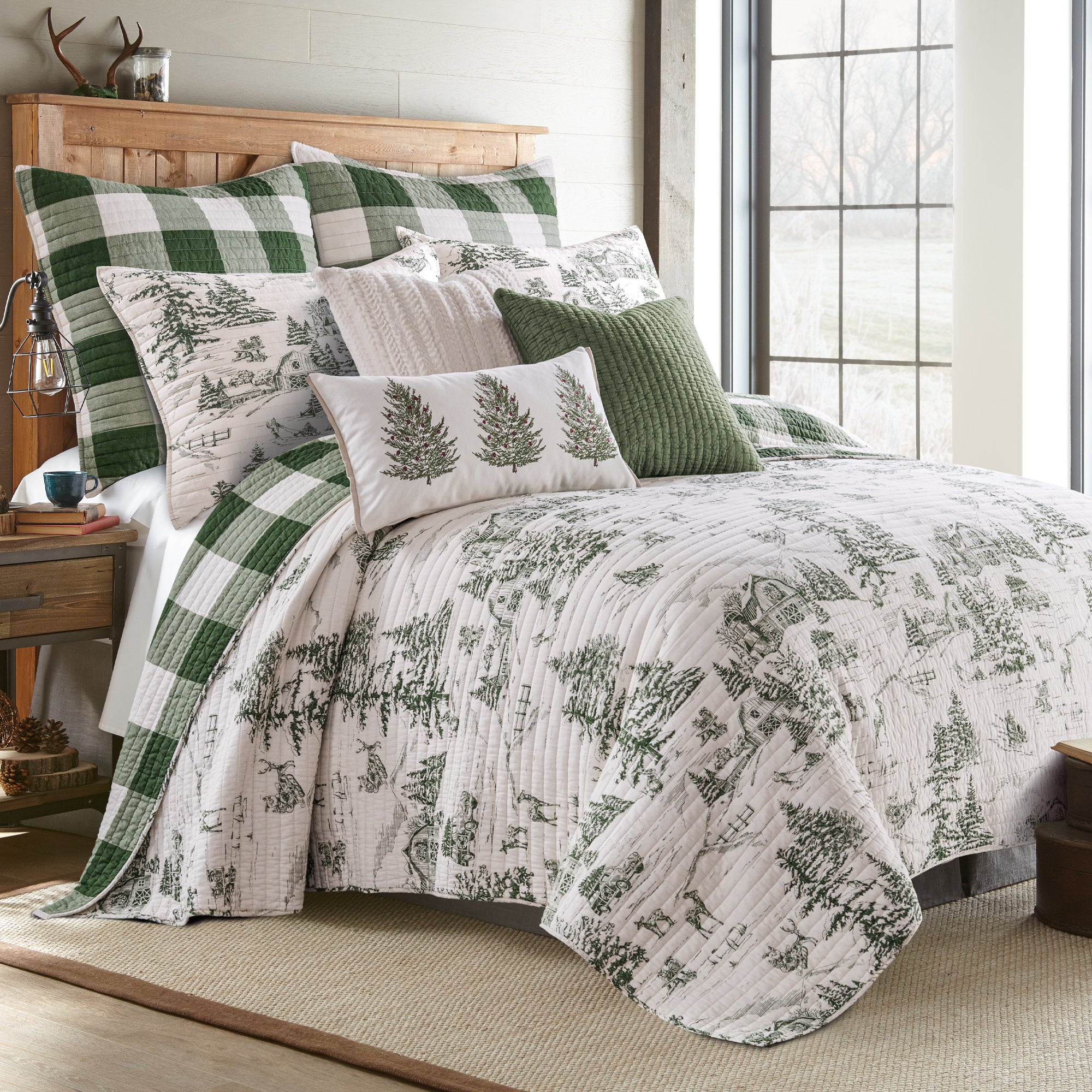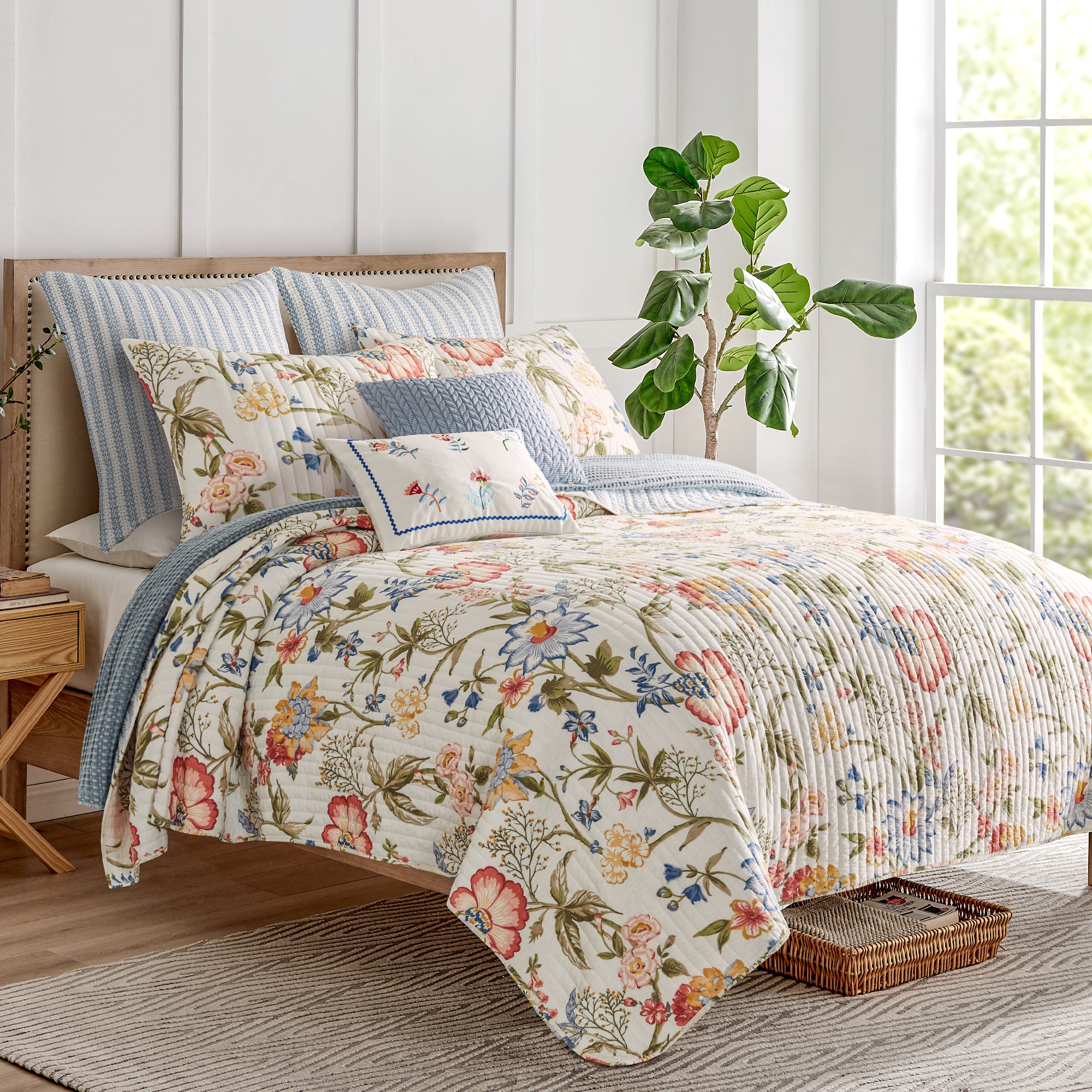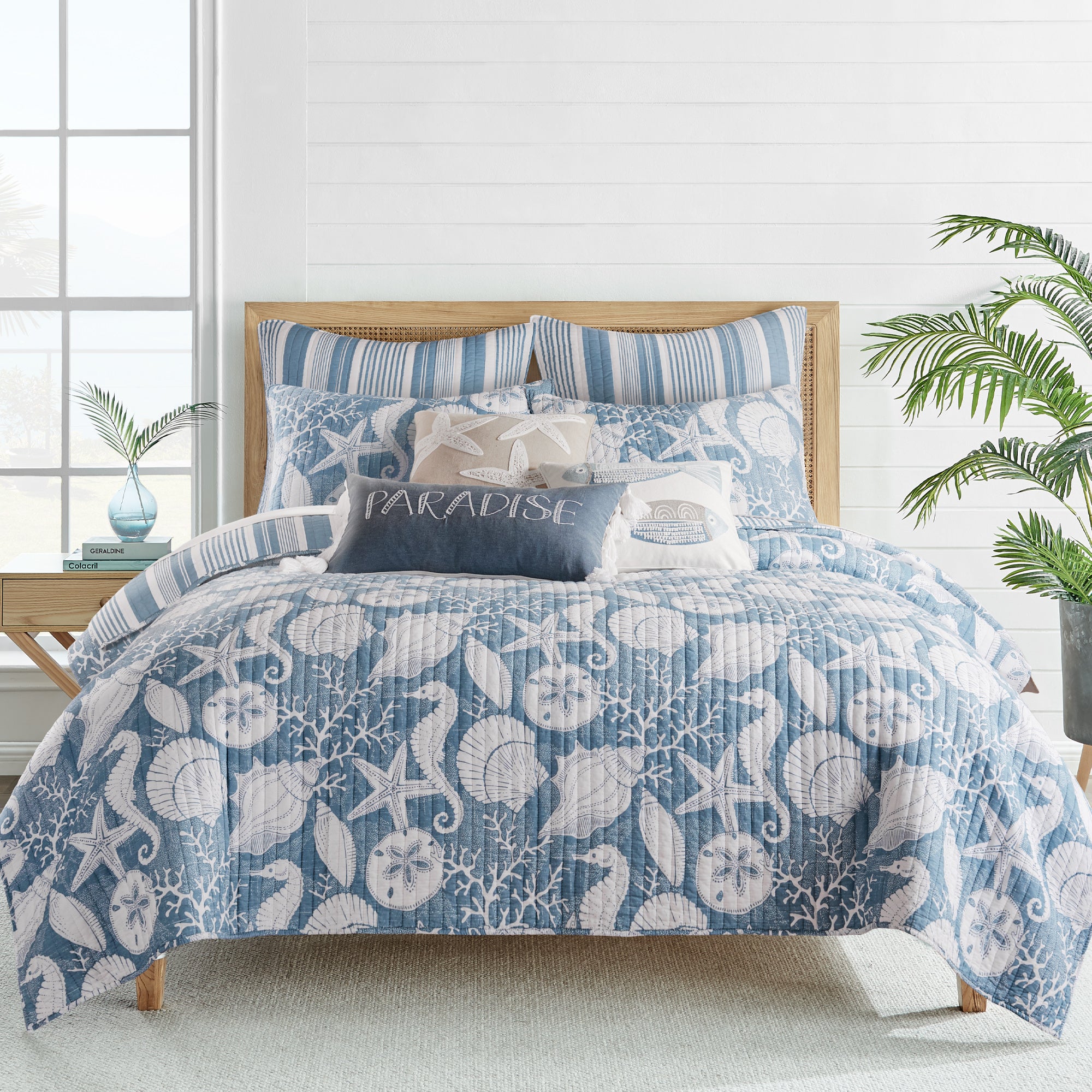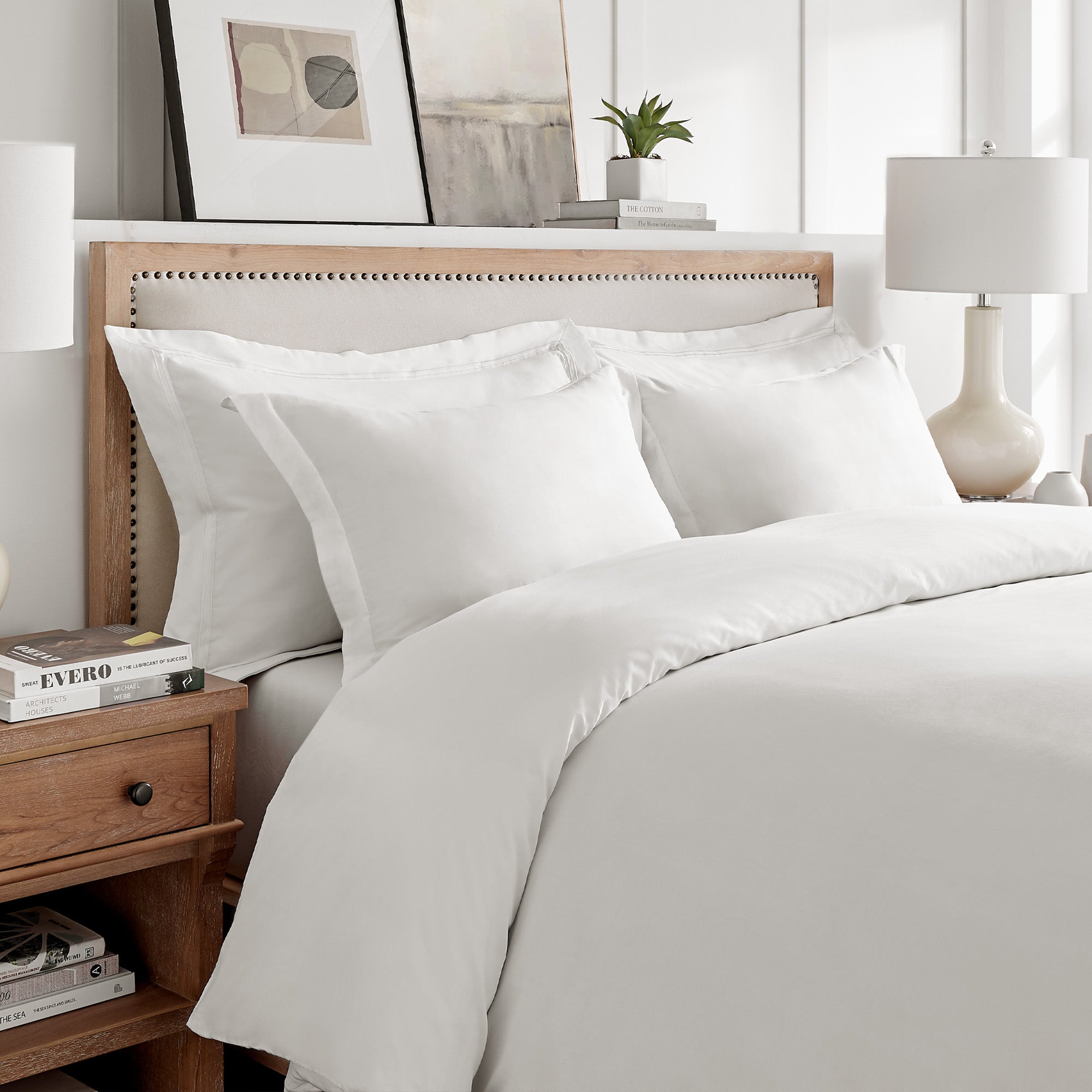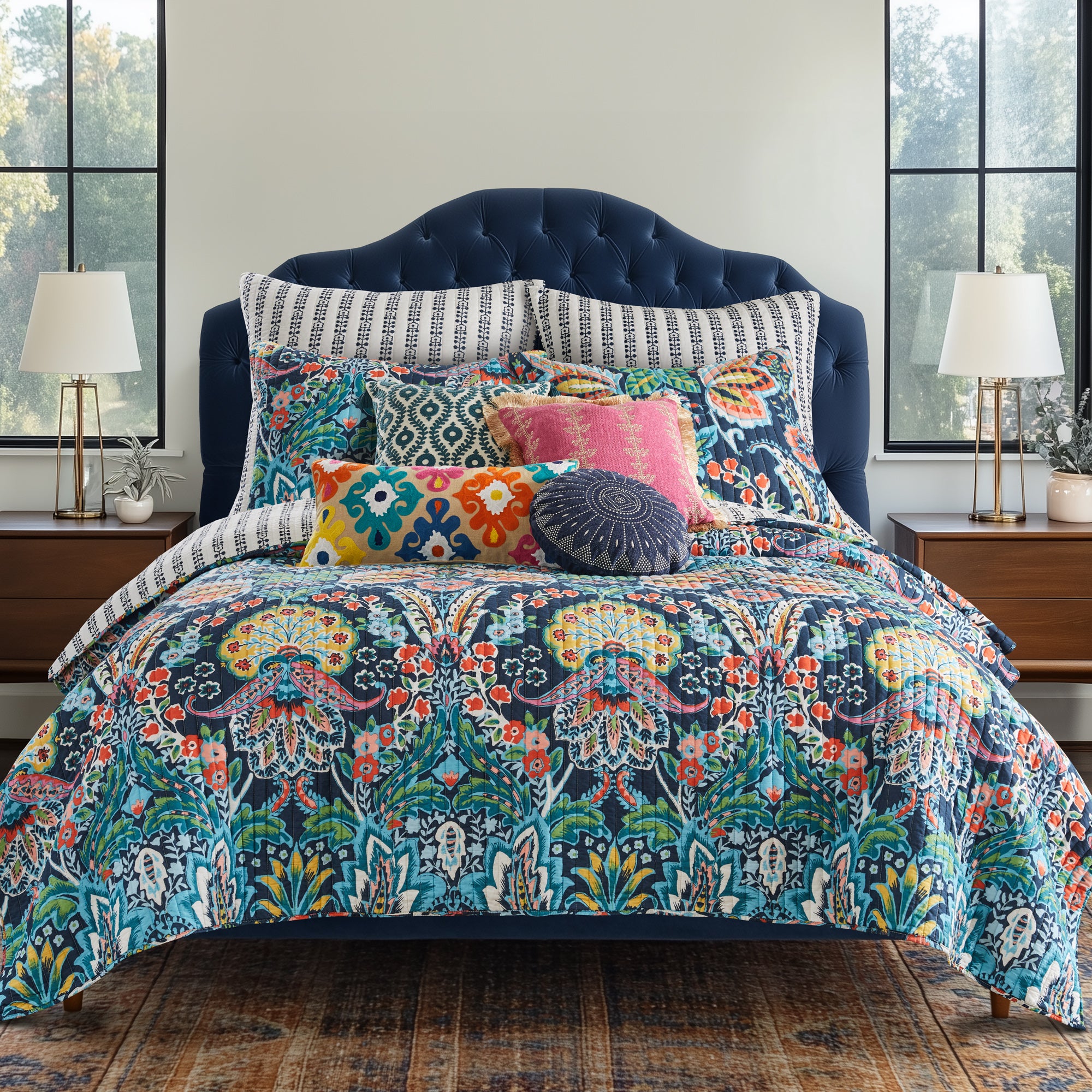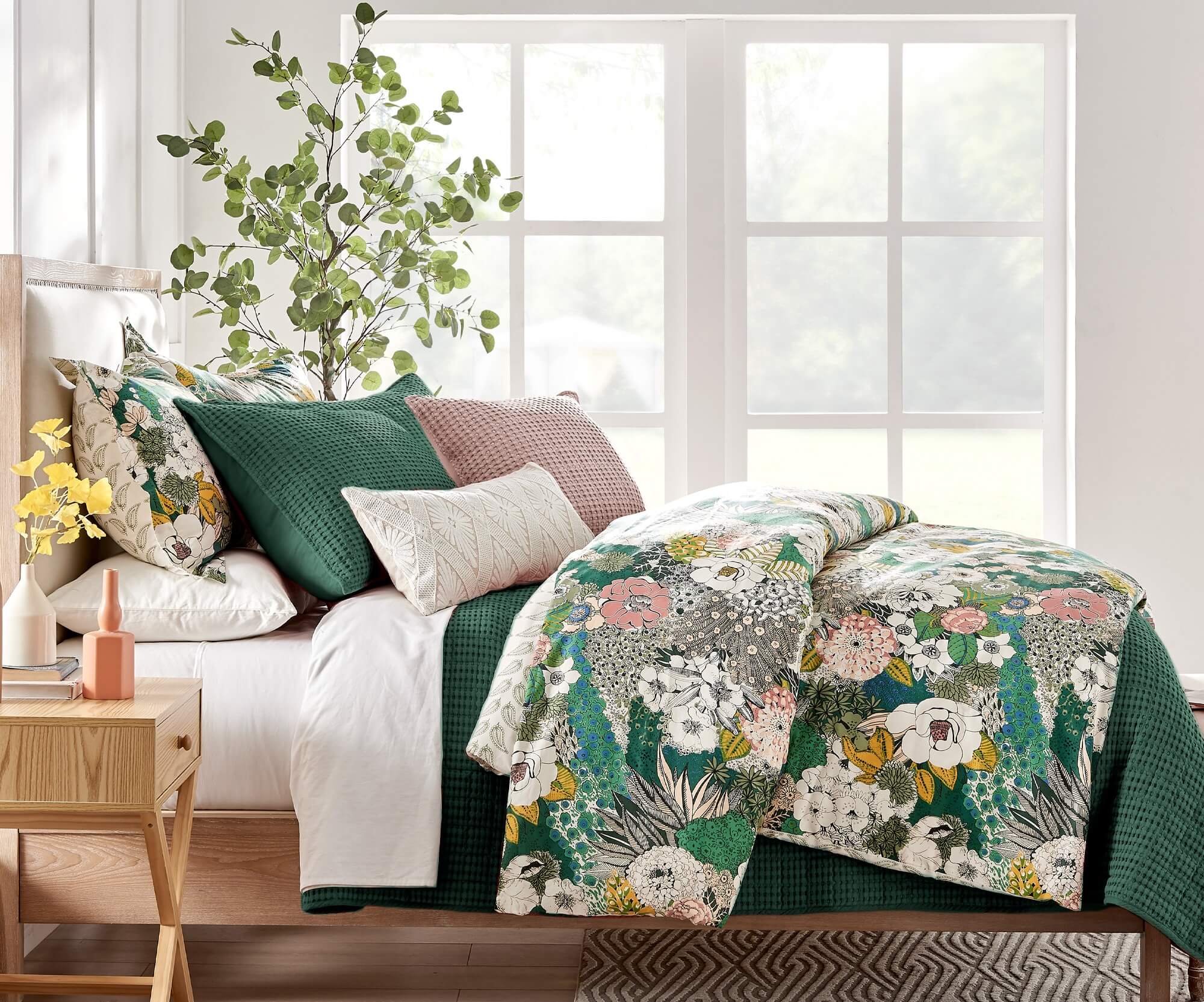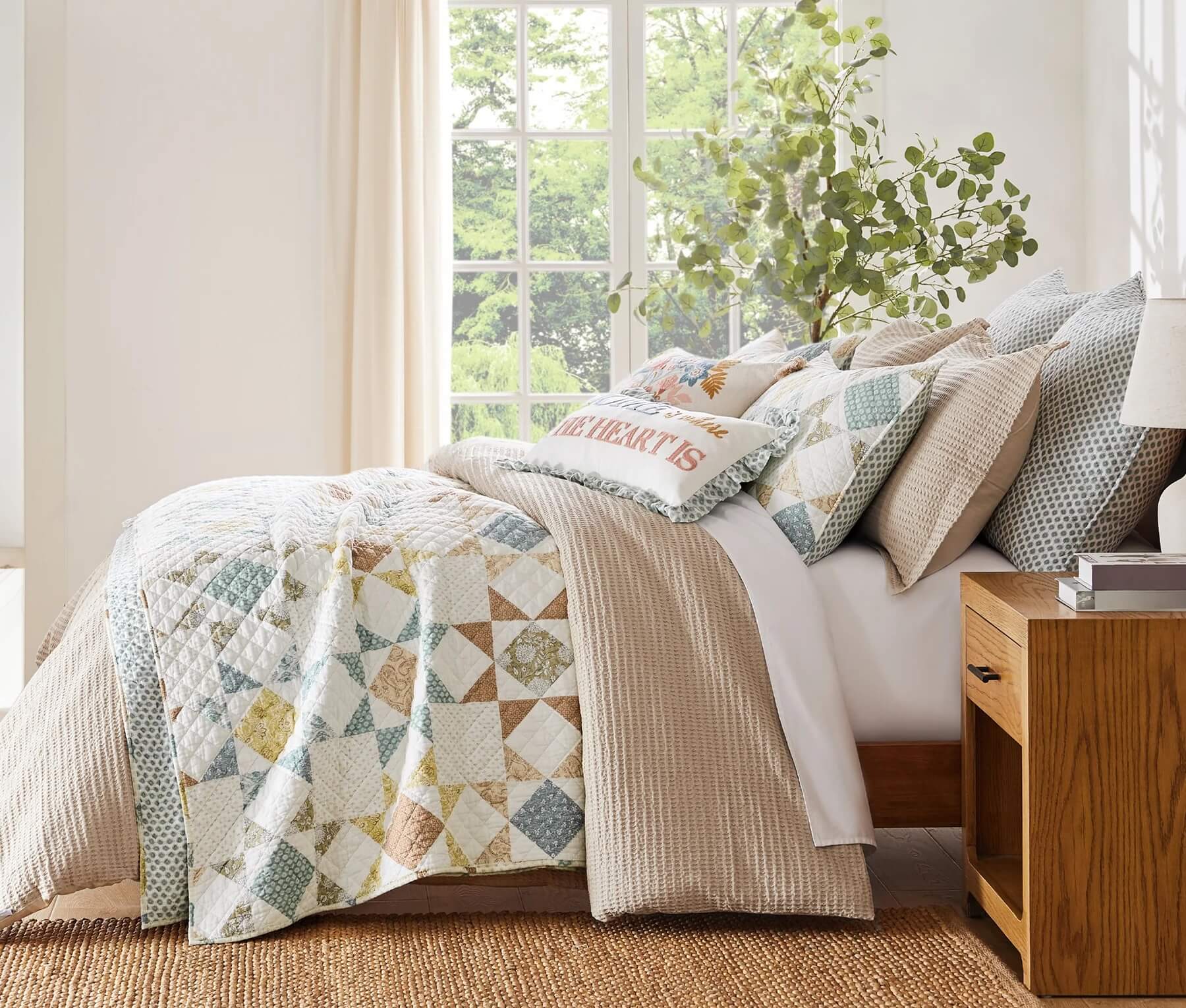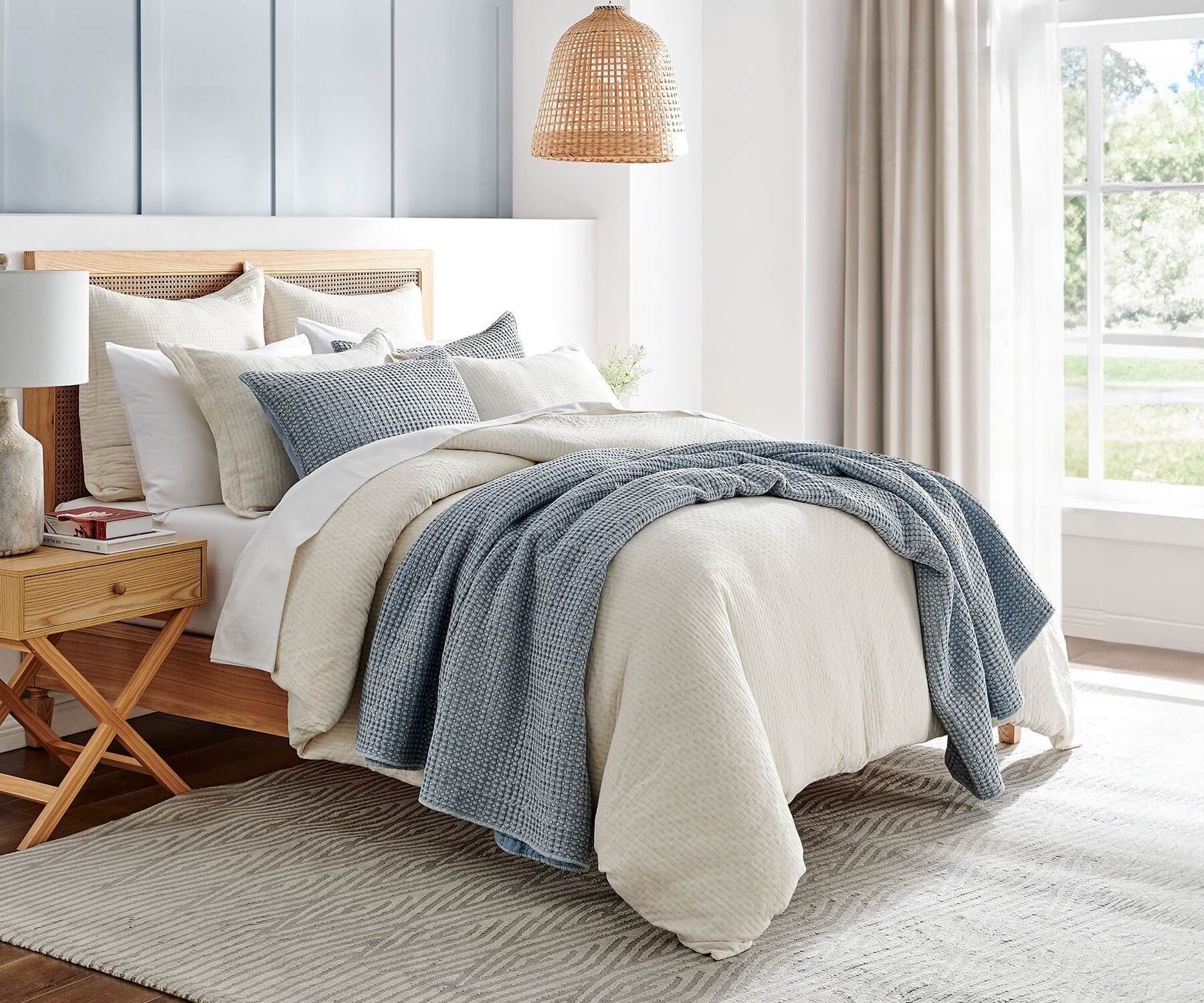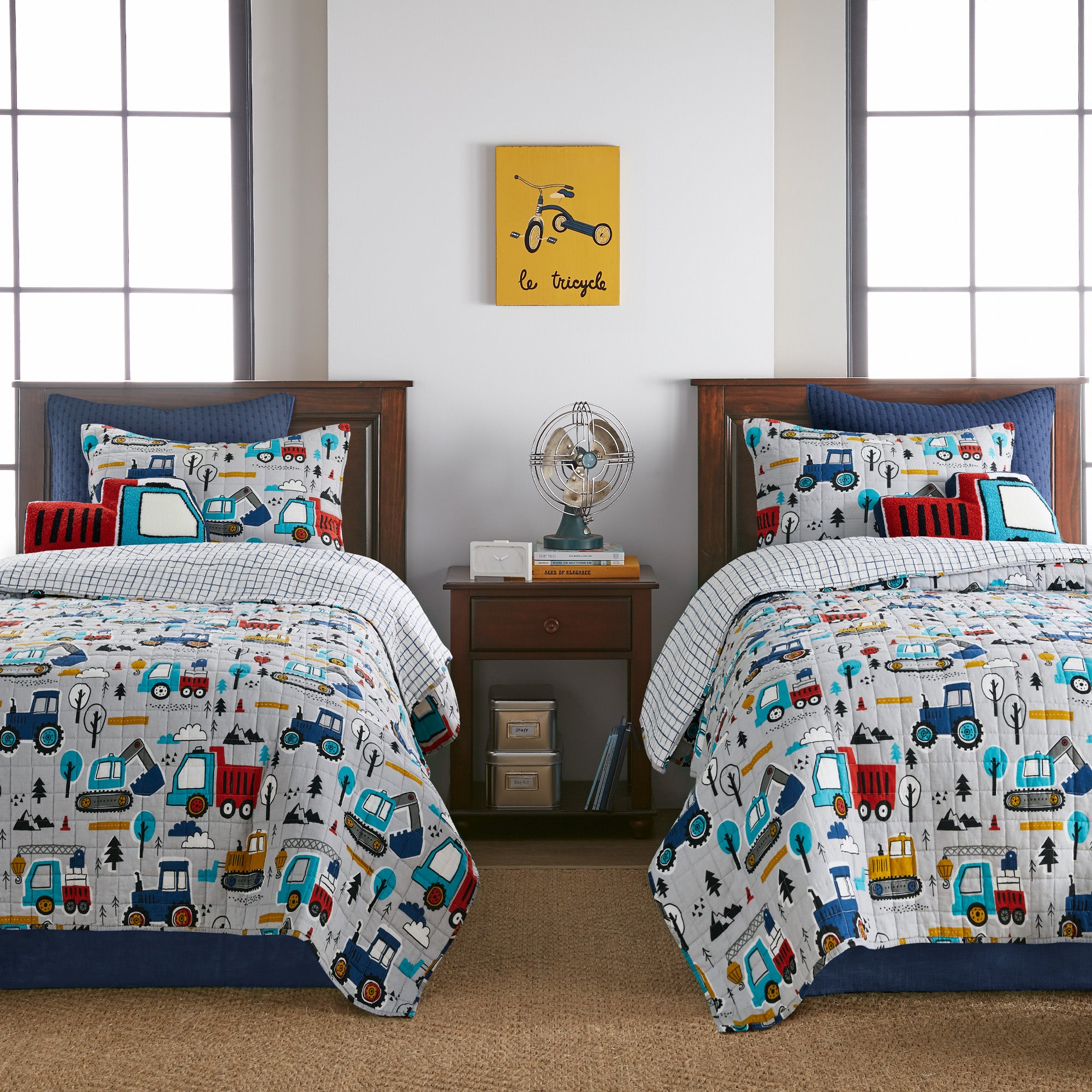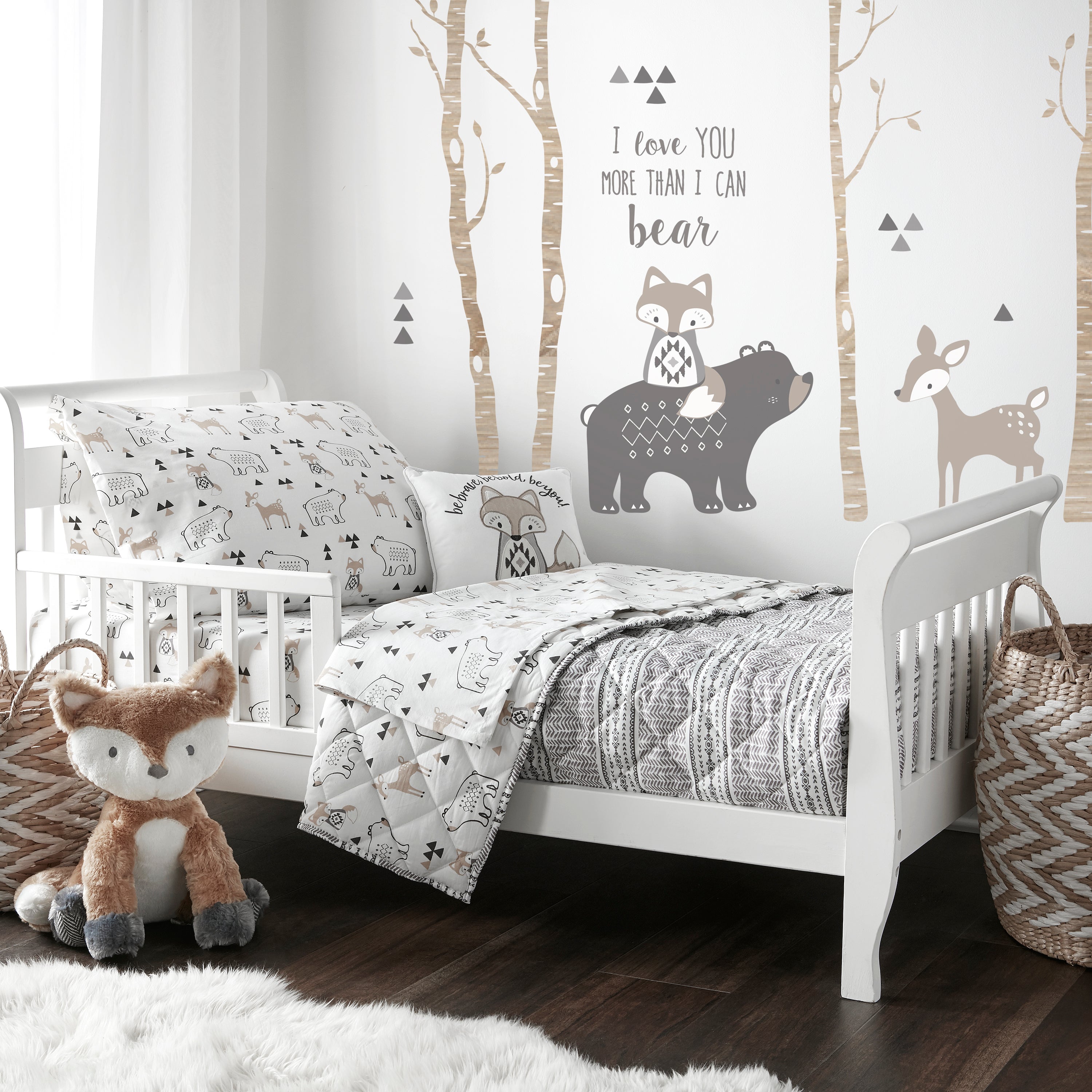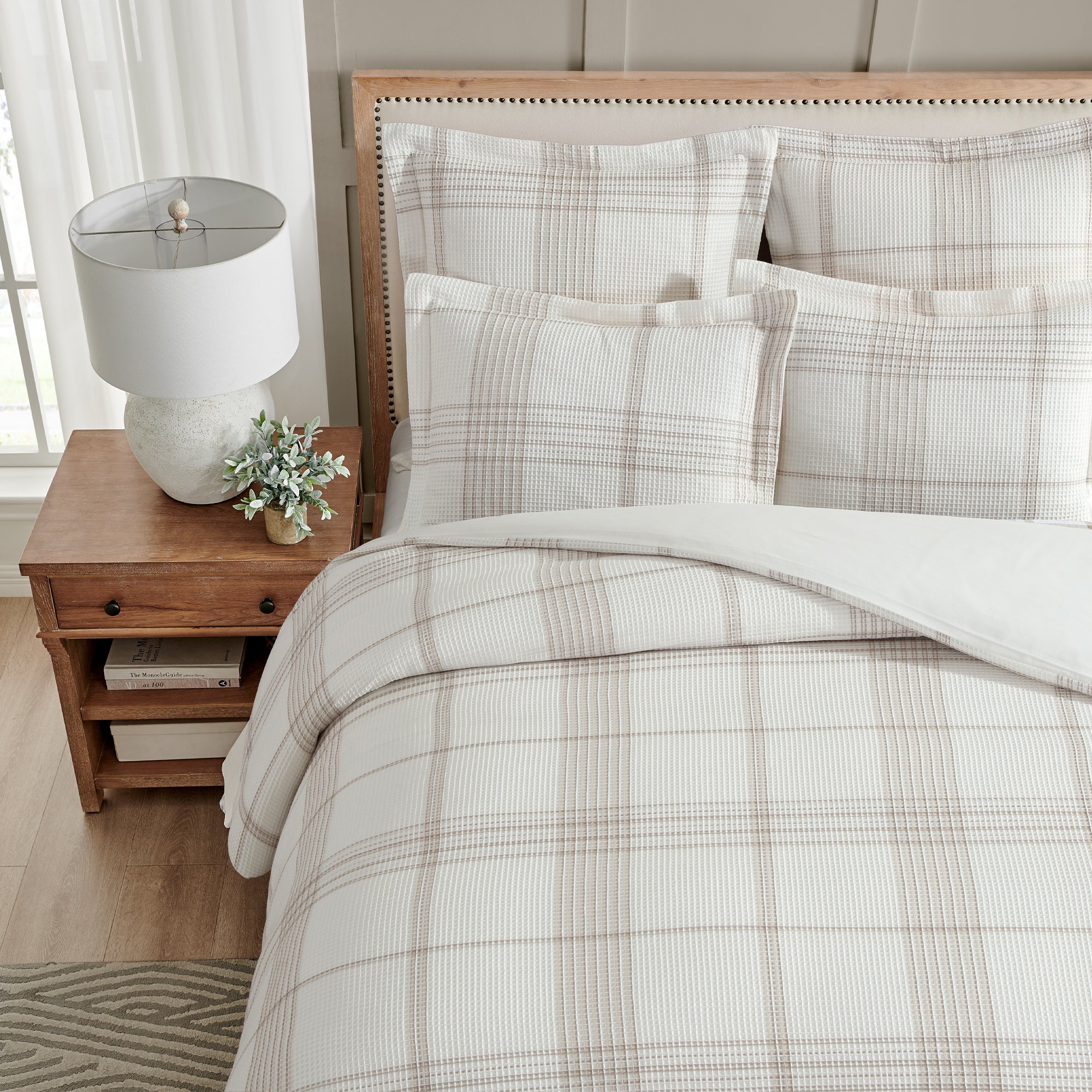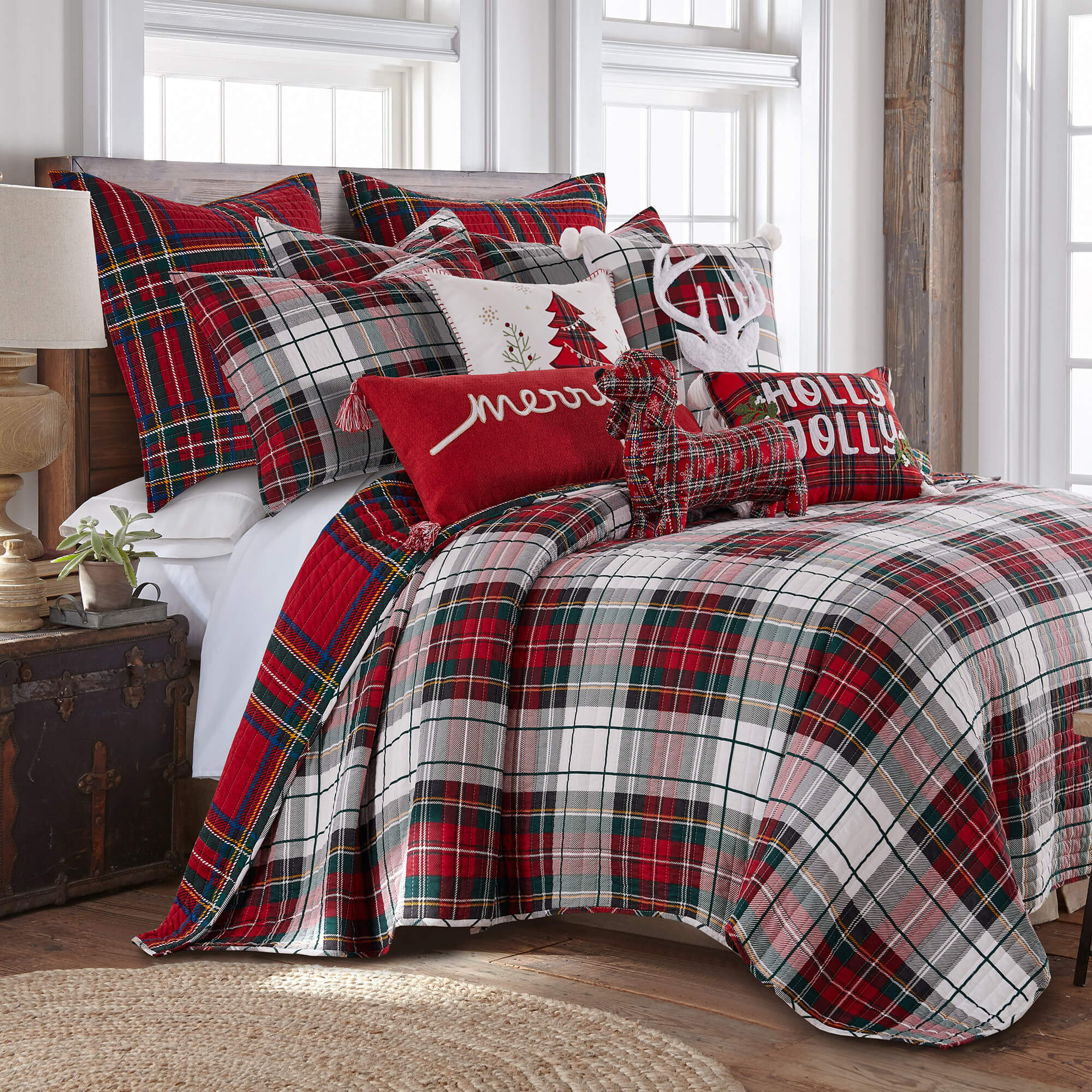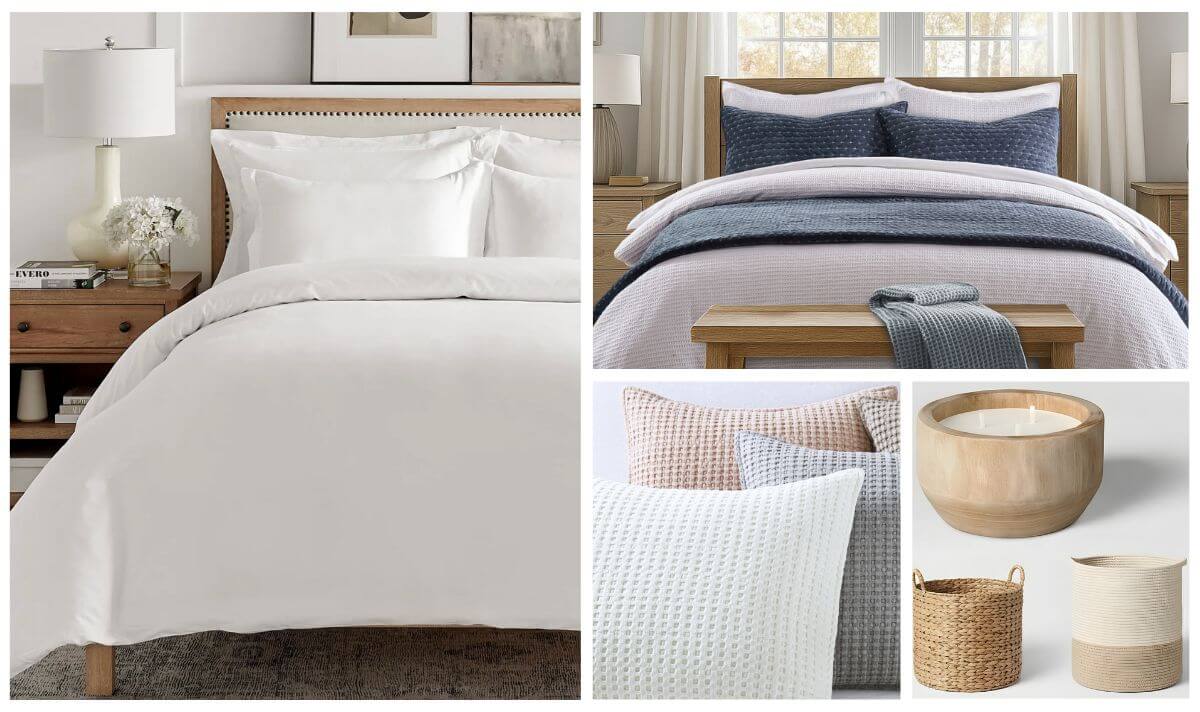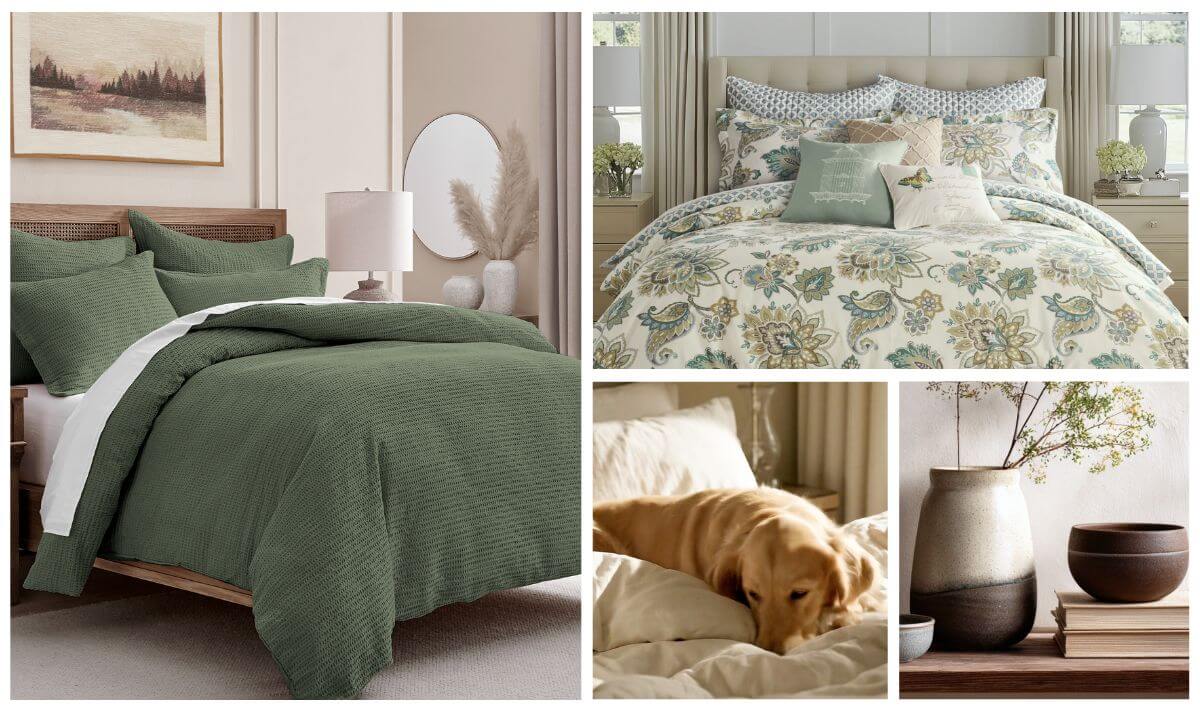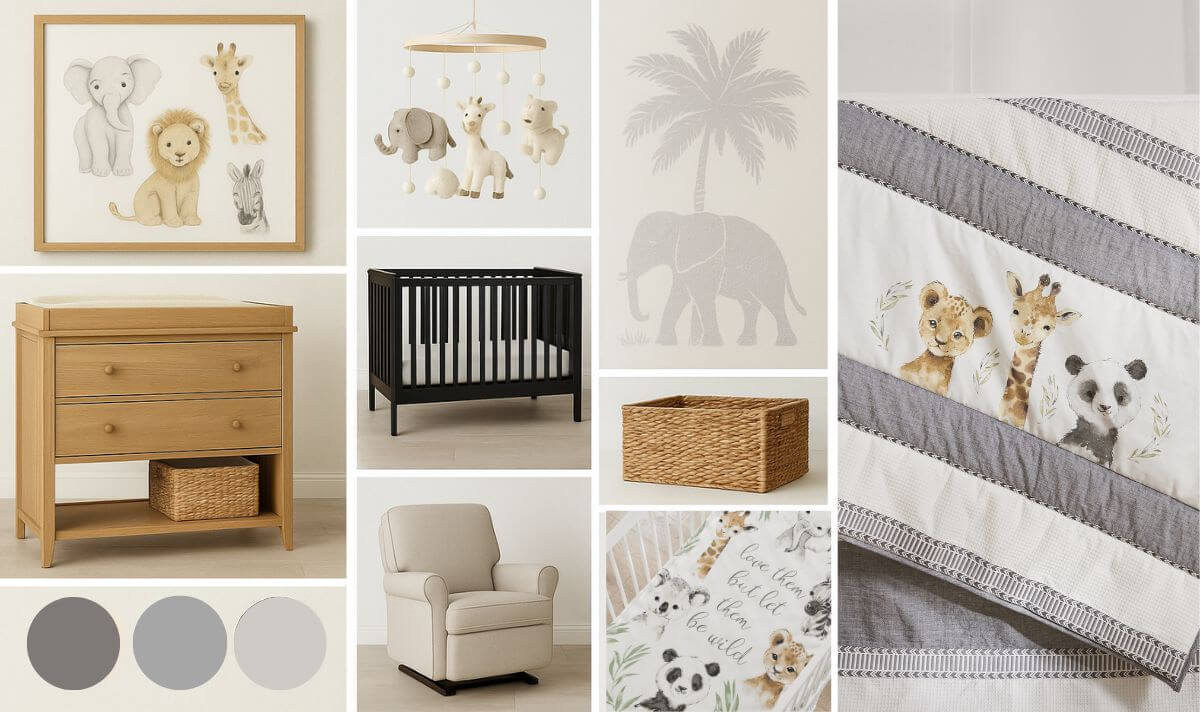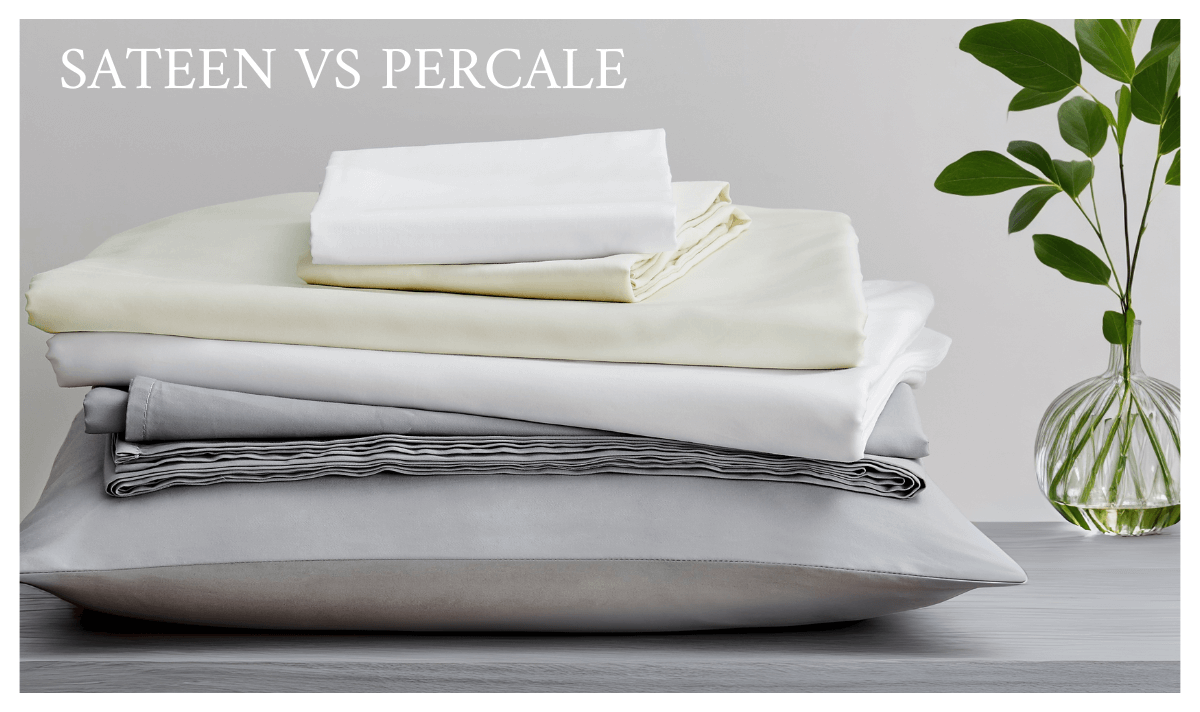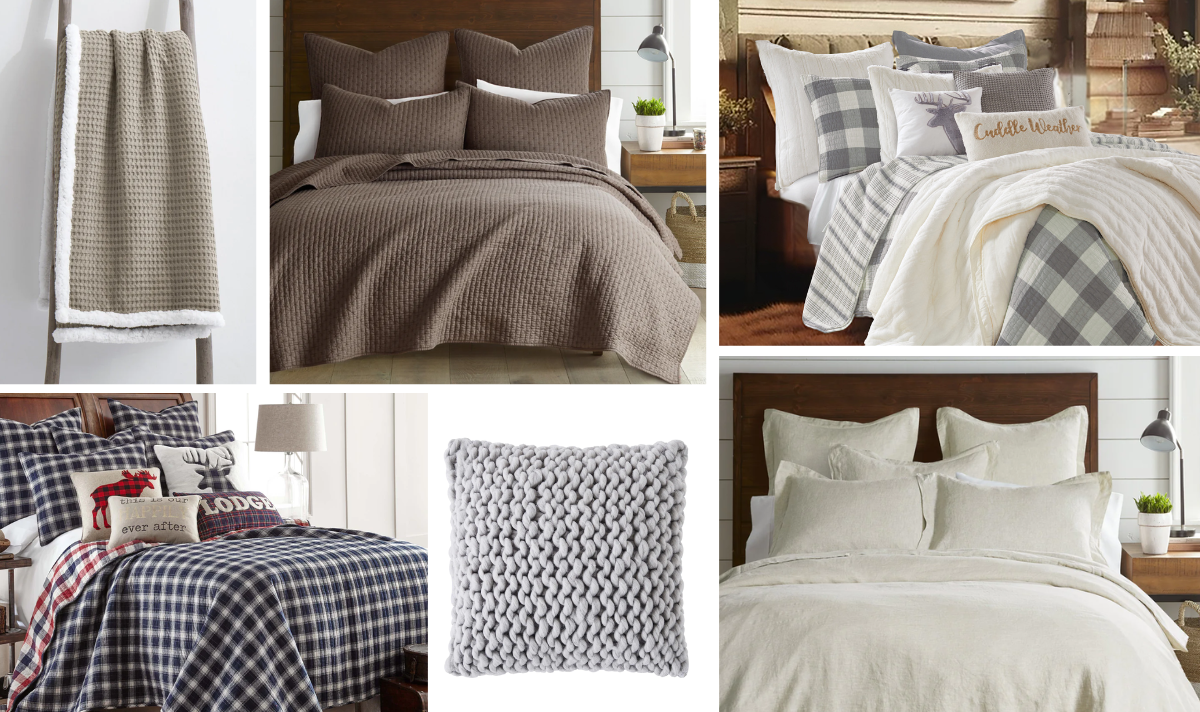When it comes to bedding, choosing the right sheets can make a world of difference in your sleep quality and overall comfort. In fact, studies have shown that people sleep better when their room is optimized for comfort and temperature. Among the myriad of options available, two stand out as timeless favorites - sateen and percale sheets. Both are highly regarded for their distinct characteristics, but understanding the differences between them can be a bit confusing. In this comprehensive guide, we will define sateen and percale, and explore the pros and cons of each. By the end, you'll be equipped with the knowledge you need to make an informed choice for your dreamiest slumber yet.
What Are Sateen Sheets?
Sateen sheets are known for their silky-smooth texture and subtle sheen. Sateen refers to a weave pattern, not a specific material. These sheets are woven using a special weave pattern that allows for a higher thread count, making them luxuriously soft and durable. The weave pattern involves a four-over, one-under structure, which results in a fabric with more threads on the surface, creating a soft and smooth surface. Sateen sheets are typically made from high-quality cotton, like Egyptian or Pima cotton, and sometimes can incorporate synthetic fibers for added strength and sheen.
"A higher thread count doesn’t always translate to higher quality or superior comfort. Weaker, cheaper threads can be twisted to increase the thread count number. In summary, don’t expect an 800 thread count bed sheet to be better than a 300 thread count sheet. If you have 1,000 threads per square inch, the sheet will feel heavy and thick—not ideal for a warm sleeper!” - Annie Kersey, lead interior designer at Purple Cherry Architects
Although this weave pattern does make the sheets slightly heavier than percale making for a cozier and more luxurious look, sateen sheets are more likely to trap heat than percale sheets. So, if you are someone who prefers a nice cool bed or depending on the season this may be something you want to keep in mind when shopping between the two. Another thing to keep in mind is that although percale sheets start out smooth and soft, with age they can begin to pill.
Sateen sheets can also be both affordable and more on the luxurious side depending on the materials, quality and thread count (see our blog on thread count for more information on whether thread count matters). If you are looking for budget-friendly sateen sheets Levtex does happen to carry.
Sateen sheets embody the perfect balance of luxury and comfort. Their silky-smooth texture pampers the skin, while their warmth and coziness create a relaxing and inviting sleep environment. Whether you seek a touch of elegance or a haven of warmth, sateen sheets offer a sleep experience that is both luxurious and comforting.
| SATEEN | PROS | CONS |
|---|---|---|
| DURABILITY | Thanks to the tight weave and high thread count, sateen sheets are durable and long-lasting. They can withstand regular washing and maintain their softness and quality over time. | Heavier than most sheets and can pill and snag with age. |
| COMFORT AND FEEL | Sateen sheets are prized for their exceptionally smooth and silky texture. They offer a buttery-soft touch that feels incredibly gentle against your skin, providing a luxurious and inviting sleep environment. | Some individuals may find the slippery texture of sateen sheets less appealing, especially if they are used to a crisper feel. |
| TEMPERATURE REGULATION | Sateen sheets are breathable and provide excellent temperature regulation. | While sateen sheets offer good breathability, they may not be the best choice for those who tend to sleep hot. In such cases, percale sheets may be a more suitable option. |
| COST | More affordable options are available. | Sateen sheets are often more expensive than percale sheets due to the use of high-quality cotton and the complex weaving process. |
What Are Percale Sheets?
Percale sheets are known for their crisp and cool feel. They are woven in a simple one-over, one-under pattern, which results in a grid-like appearance and a smooth, matte finish. Percale itself is a weave and not a type of material. Percale sheets are typically made from high-quality cotton, such as Egyptian or Pima cotton, and are prized for their lightweight and breathable nature.
"The percale weave is a basic over-under weave. It’s woven tightly, but the nature of the over-under is going to allow for more airflow." - Anna Brakefield, co-founder of Red Land Cotton
Percale sheets usually start out soft and get even softer with repeated washings and have a smooth matte finish. Percale sheets also tend to be durable and easy to care for. However, since they’re prone to wrinkling in the wash, many sleepers choose to iron percale to enhance its crispness.
The crispness of percale sheets is not merely a matter of personal preference; it has a scientific basis. The one-over-one weave pattern creates a tightly woven fabric with minimal space between the threads. This dense construction prevents the fibers from slipping and sliding past each other, resulting in a fabric that resists bunching and maintains its crisp shape.
Additionally, the high thread count of percale sheets contributes to their crispness. Thread count refers to the number of threads woven into a square inch of fabric. Higher thread count sheets generally feel denser and crisper, while lower thread count sheets tend to be softer and more pliable. Percale sheets typically have a thread count of 200 or higher, enhancing their crispness and durability.
White percale sheets have long been a staple in bedrooms, and for good reason. Their timeless elegance and versatility make them a popular choice for a wide range of décor styles. The crisp, white hue adds a touch of freshness and sophistication to the bedroom, creating a sense of tranquility and spaciousness.
White percale sheets also offer a practical advantage. Their neutral color makes them easy to coordinate with various bedding ensembles, from vibrant hues to subtle patterns. Additionally, white percale sheets tend to show dirt less prominently than darker colors, making them a low-maintenance option.
Percale sheets are not just about aesthetics; they also contribute to a restful night's sleep. Their crisp, cool feel promotes airflow and prevents overheating, making them ideal for hot sleepers. Additionally, percale sheets are soft and gentle on the skin, providing a comfortable sleeping surface.
| PERCALE | PROS | CONS |
|---|---|---|
| DURABILITY | Percale sheets are known for their durability and resistance to pilling. The tight weave pattern contributes to their longevity, and they tend to become softer with each wash while retaining their quality. | |
| COMFORT AND FEEL | Percale sheets usually have a light, crisp, smooth feel. | The crispness of percale sheets can be a drawback for those who prefer a silky, smooth feel. The texture is less luxurious compared to sateen sheets, which some people might find less inviting. |
| TEMPERATURE REGULATION | Percale sheets are favored for their crisp and cool feel, making them an excellent choice for hot sleepers and warm climates. They offer a refreshing sleep experience that feels light and breathable. | While percale sheets excel in breathability, they may not be the best choice for colder climates or for individuals who prefer a warmer sleep environment. |
| COST | Compared to sateen sheets, percale sheets are often more affordable, making them an attractive option for those who want high-quality sheets without breaking the bank. |
Sateen vs. Percale Sheets - Main Differences
The main difference between sateen and percale sheets lies in their weave patterns and resulting textures. Sateen sheets have a unique four-over, one-under weave pattern that produces a silky-smooth feel with a subtle sheen, making them luxurious and inviting. In contrast, percale sheets feature a simple one-over, one-under weave, creating a crisp and cool texture that's especially well-suited for hot sleepers and warm climates. Your choice between the two comes down to your preference for a silky, smooth feel (sateen) or a crisp, cool touch (percale).
Which One to Choose For a Better Night’s Sleep
The choice between sateen and percale sheets ultimately comes down to personal preference and specific needs. Here are some factors to consider when making your decision:
Texture
If you prefer a silky-smooth feel, sateen sheets are the way to go. On the other hand, if you enjoy a crisp and cool texture, percale sheets are the better choice.
Climate
Consider the climate in which you live. Sateen sheets are more versatile in terms of temperature regulation, while percale sheets are ideal for warm climates and hot sleepers.
Budget
Your budget is an important factor. Sateen sheets are generally more expensive, while percale sheets offer a more affordable option without compromising on quality.
Maintenance
Think about how much time and effort you're willing to invest in maintaining your sheets. Sateen sheets are easier to care for, with less wrinkling than percale sheets which are prone to wrinkles.
Conclusion
In the grand debate of sateen vs. percale sheets, there's no definitive winner; it all boils down to your personal preferences and priorities. Sateen sheets offer a silky, luxurious feel with subtle sheen and excellent durability but come at a higher price point. Percale sheets, with their crisp, cool texture, affordability, and easy maintenance, are a preferred choice for many, especially in warmer climates.
Ultimately, the best way to decide is to experience both types of sheets for yourself. After all, there's no substitute for the first hand touch and feel. Whichever you choose, investing in high-quality sheets, whether sateen or percale, will undoubtedly elevate your sleeping experience to a whole new level of comfort and luxury. Sweet dreams await in your perfectly tailored bed!

FAQ
Q: Are Sateen sheets better for hot sleepers or cold sleepers?
A: Sateen sheets are not recommended for hot sleepers due to their tendency to trap heat, potentially causing discomfort during sleep. Conversely, percale sheets offer enhanced breathability and improved airflow, making them an excellent choice for individuals seeking a cooler sleeping experience. The unique weave of percale sheets facilitates better temperature regulation, ensuring a more comfortable night's rest for hot sleepers.
Q: Do percale sheets wrinkle less than sateen sheets?
A: Percale sheets are indeed more prone to wrinkles compared to sateen sheets. The tighter weave of sateen sheets contributes to their reduced susceptibility to wrinkling, maintaining a smoother appearance over time. However, it's worth noting that percale sheets, despite their wrinkling tendency, can be easily ironed to restore their crisp and tidy look, providing a simple solution to minimize wrinkles.
Q: Do sateen sheets require more maintenance than percale sheets?
A: Managing the appearance of Percale sheets, given their propensity for wrinkles, may demand additional time and effort compared to sateen sheets. The inherent wrinkle resistance of sateen sheets often results in less maintenance for a crisp appearance. However, it's important to acknowledge that sateen sheets might require more frequent laundering due to their tendency to show dirt more prominently, necessitating regular cleaning to maintain their pristine look.
Q: Which sheet type is better for people with allergies?
A: Both sateen and percale sheets are suitable for individuals with allergies, given their composition of natural cotton fibers. Cotton is generally less likely to trigger allergic reactions commonly associated with synthetic fibers, ensuring a more hypoallergenic bedding option for those with sensitivities. Consequently, both sateen and percale sheets offer a comfortable and allergy-friendly choice for sleepers seeking a healthier bedding solution.
Written by Michael Levin
References:
1. Percale vs. sateen: How to know which type of cotton sheets are best for you on Business Insider - https://www.insider.com/guides/home/percale-vs-sateen-cotton-comparison
2. The effects of fabric for sleepwear and bedding on sleep at ambient temperatures of 17°C and 22°C on Natianal Library of Medicine - https://www.ncbi.nlm.nih.gov/pmc/articles/PMC4853167/
3. The Bedroom Environment on Sleep Fundation - https://www.sleepfoundation.org/bedroom-environment

